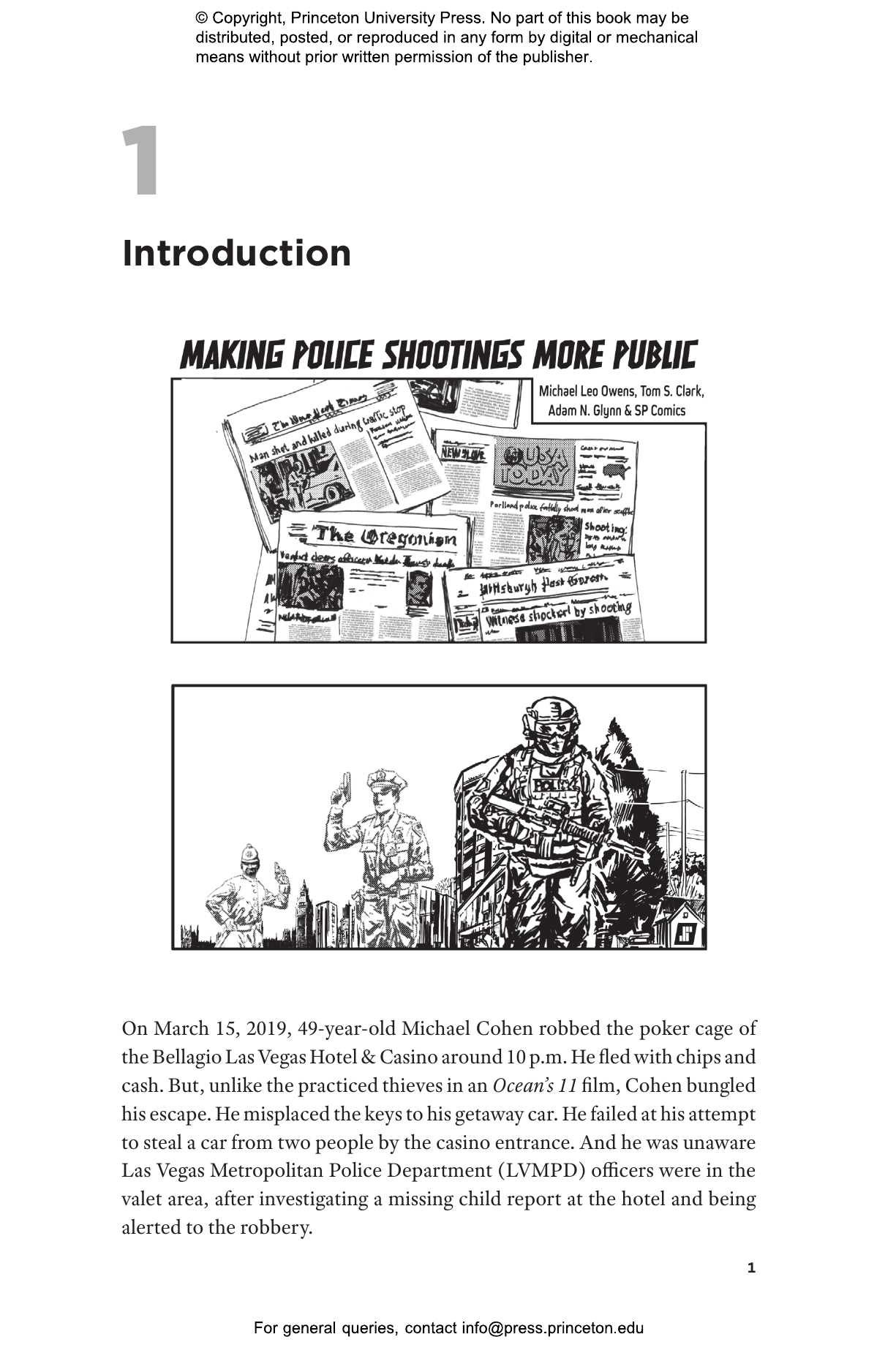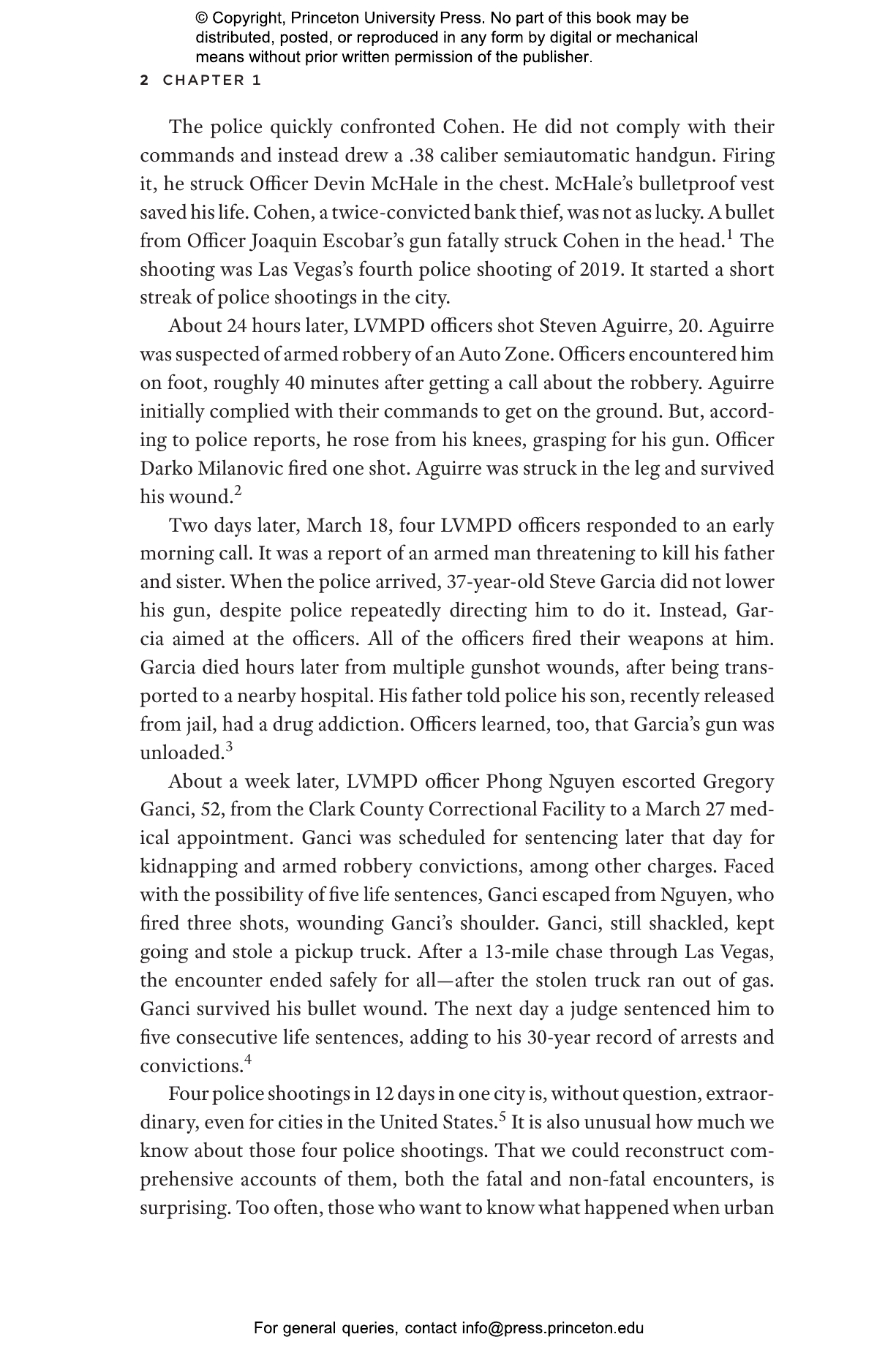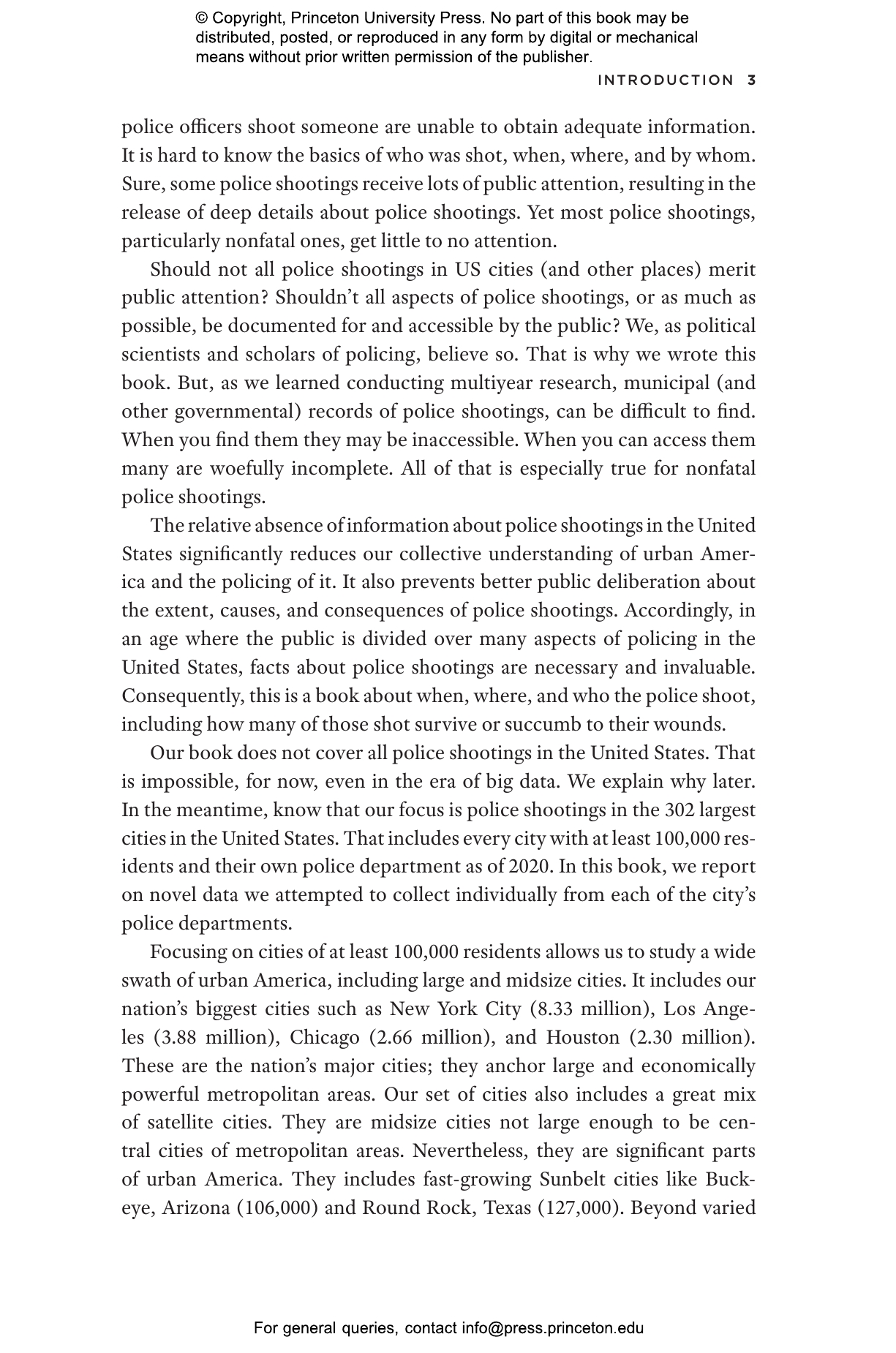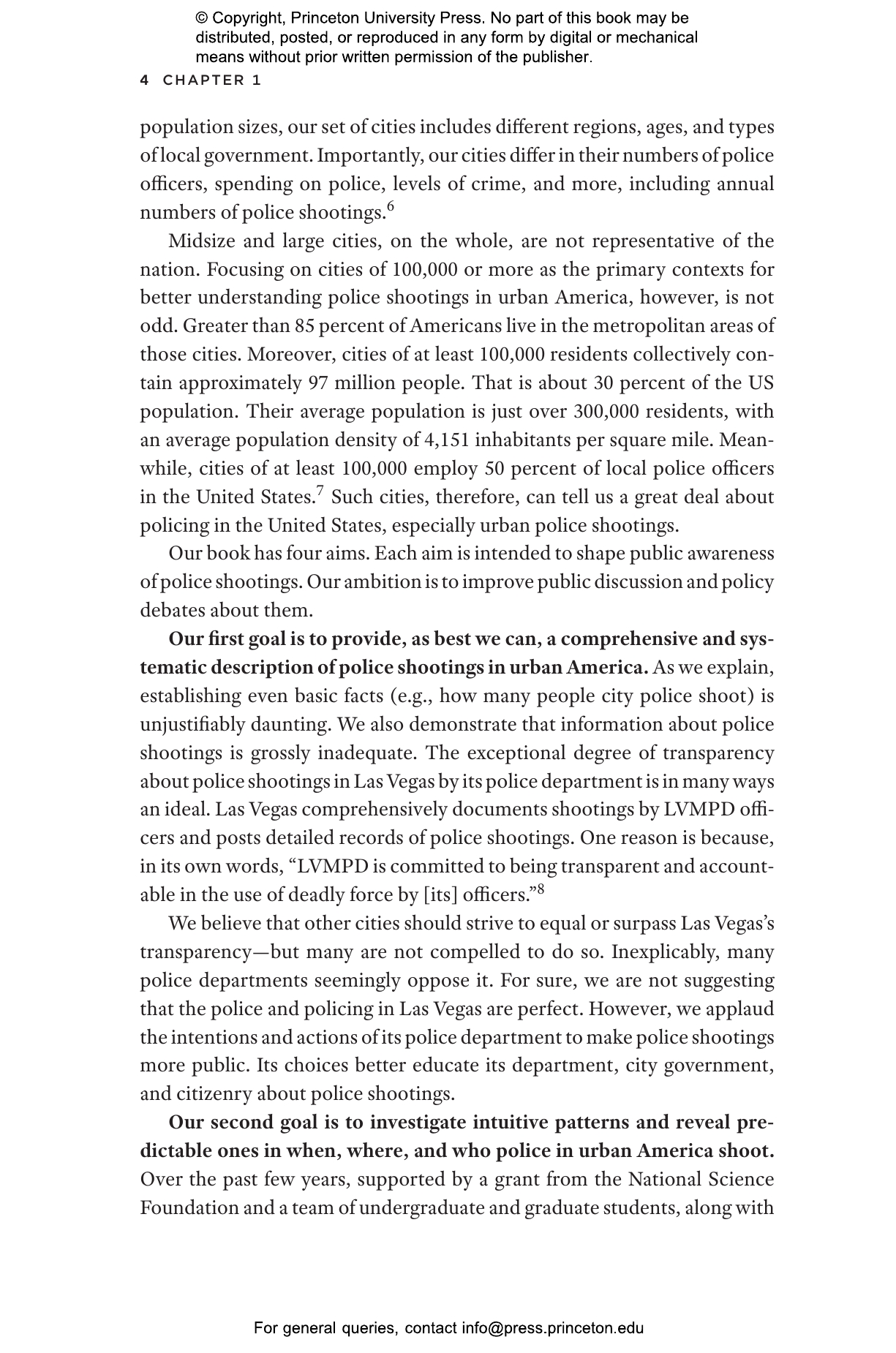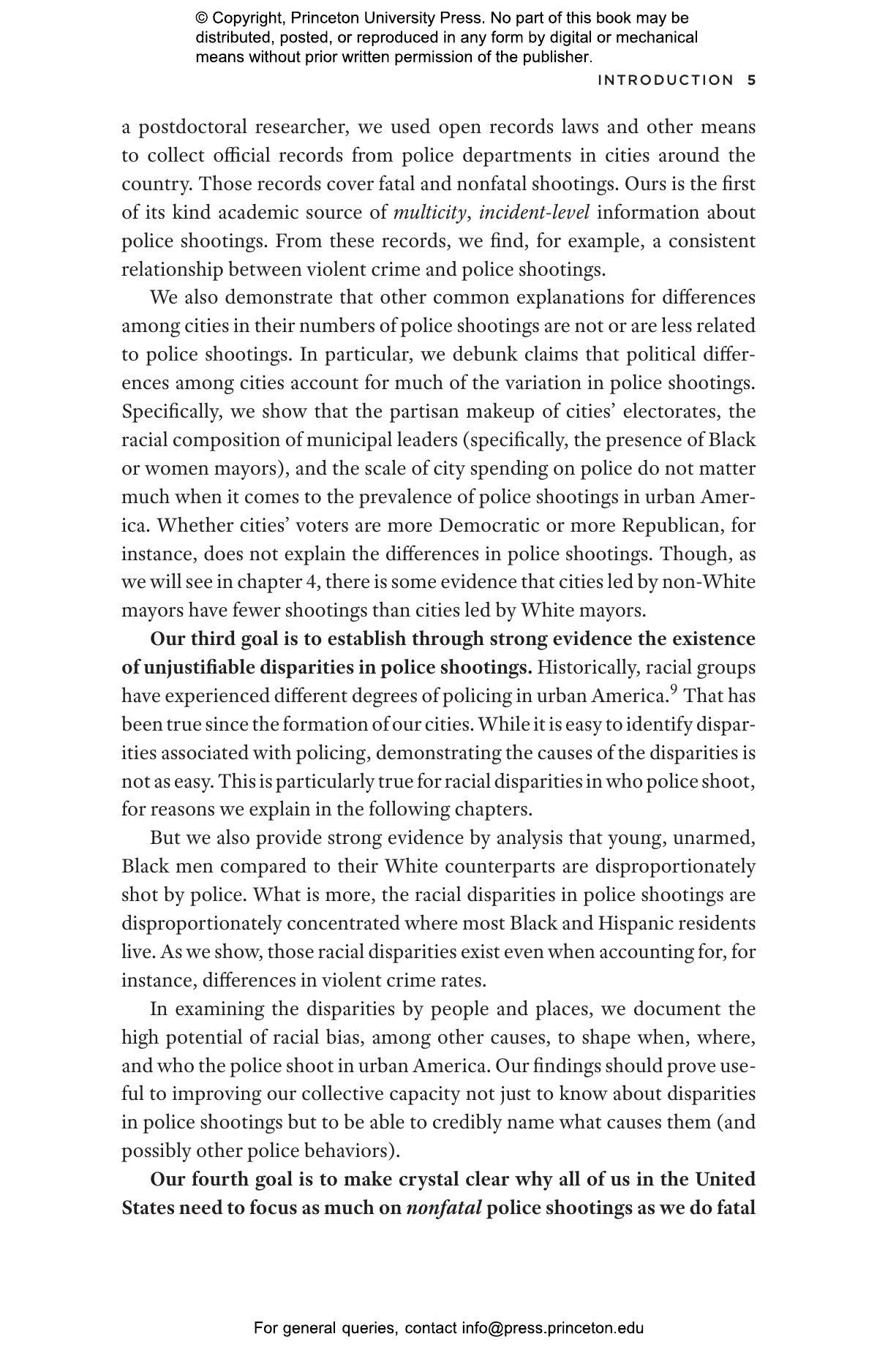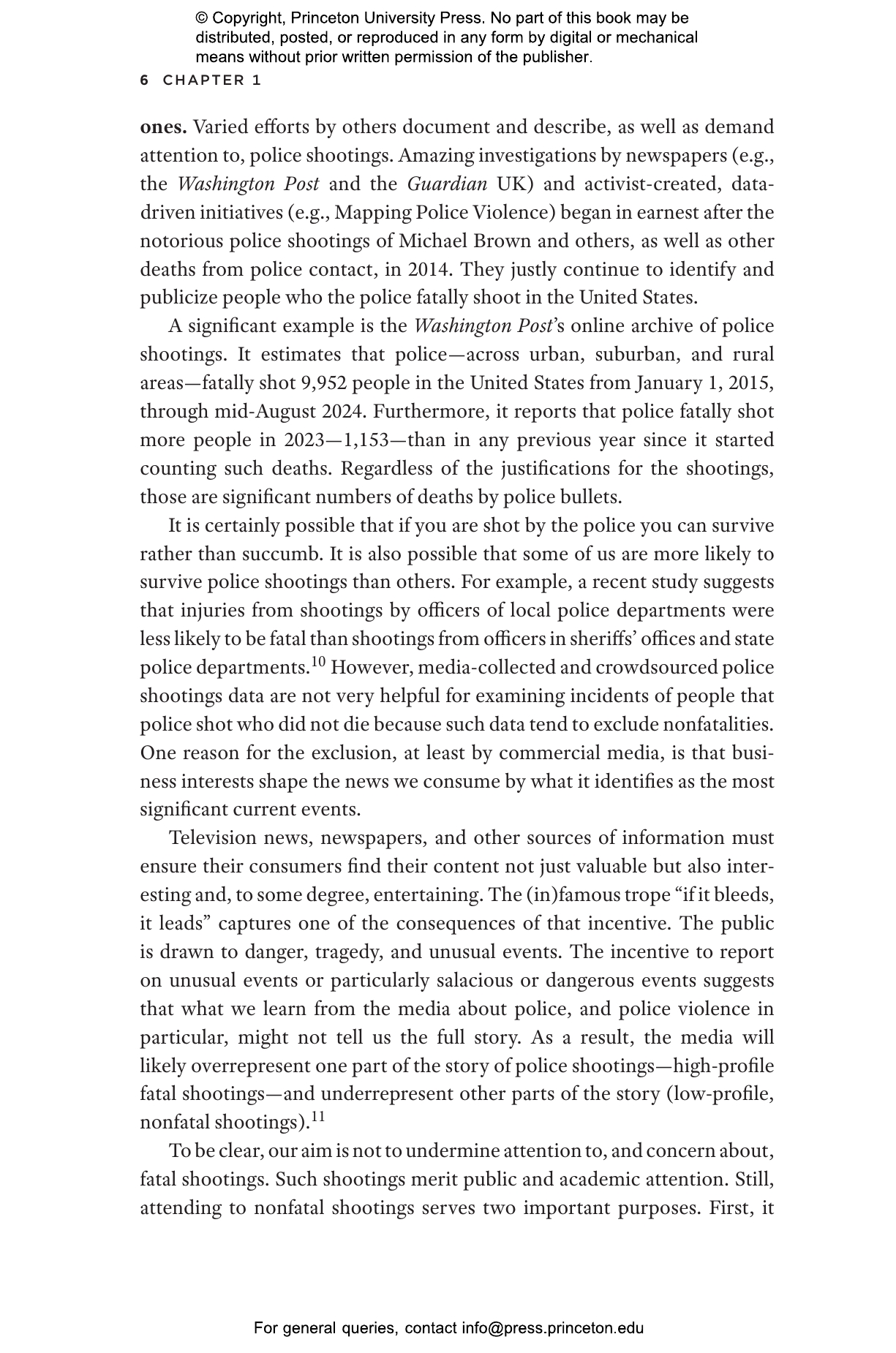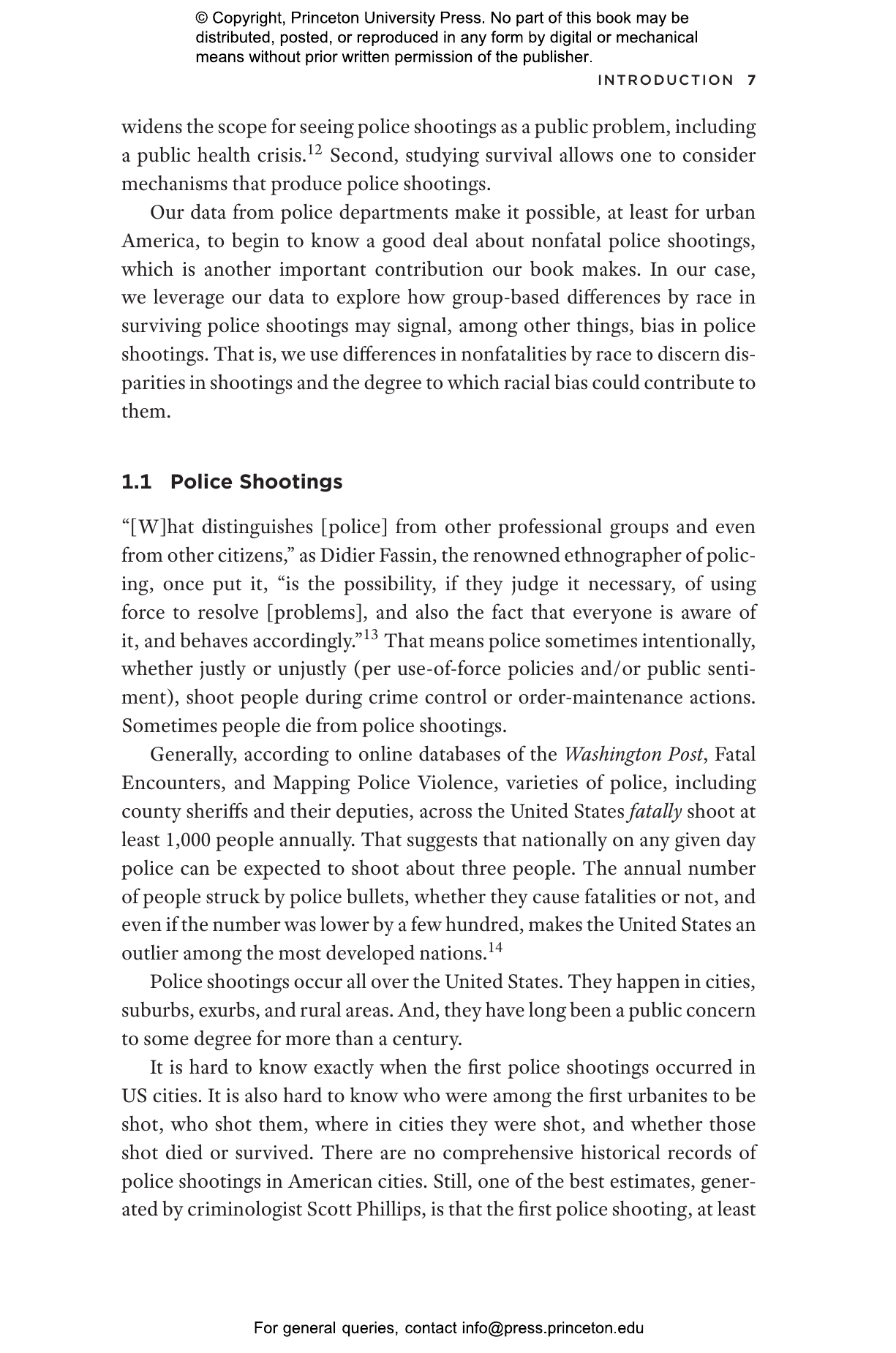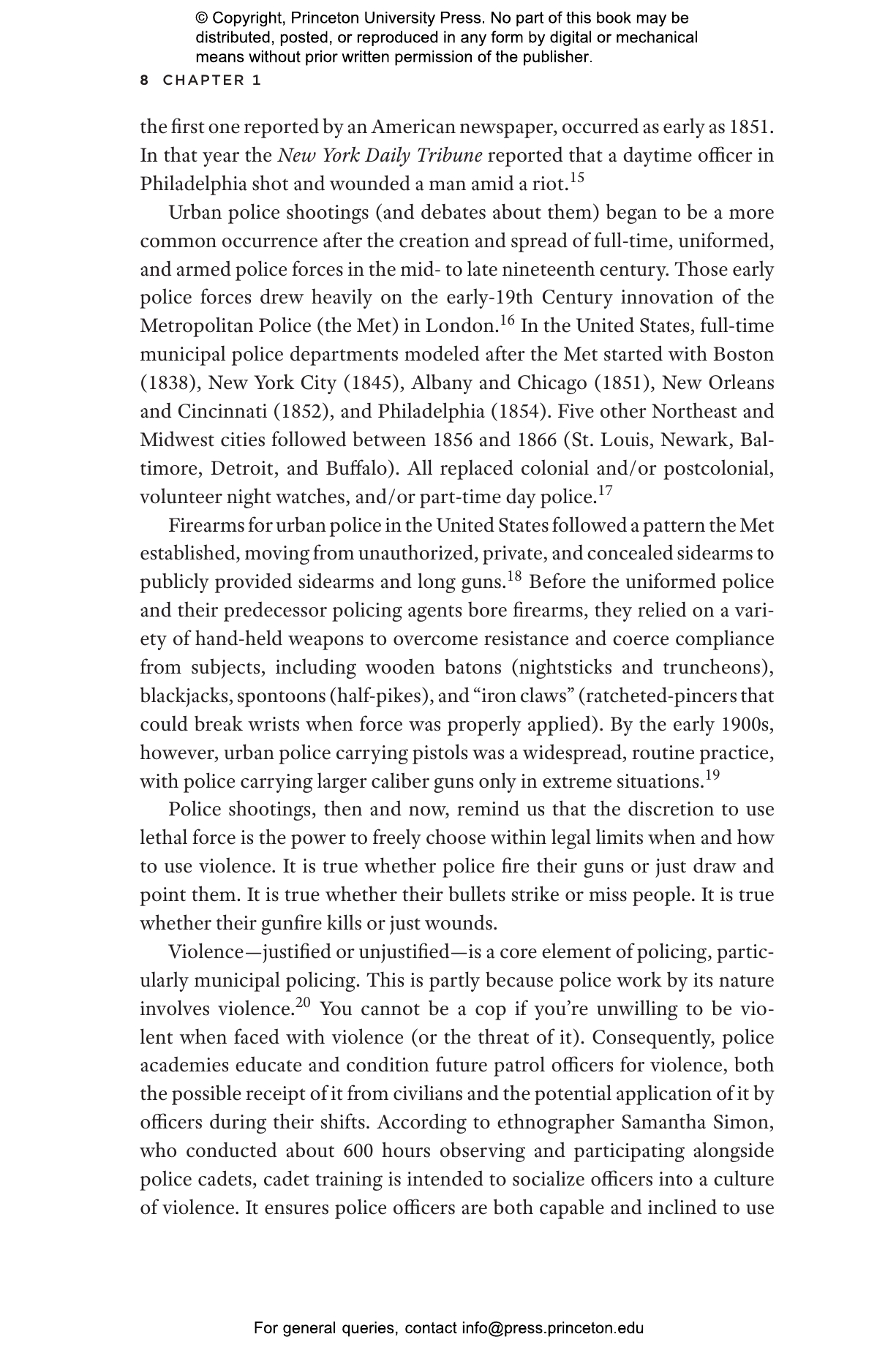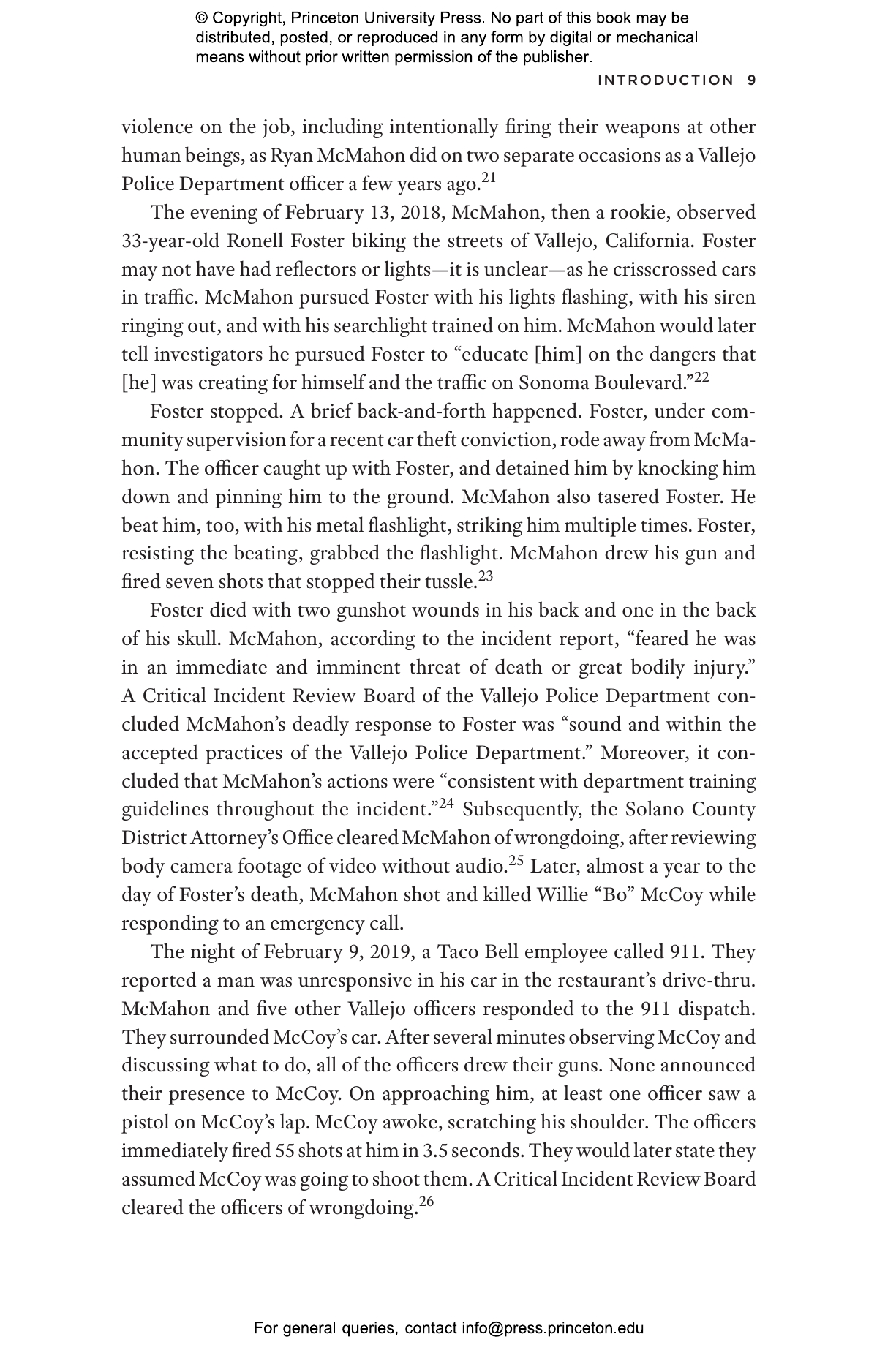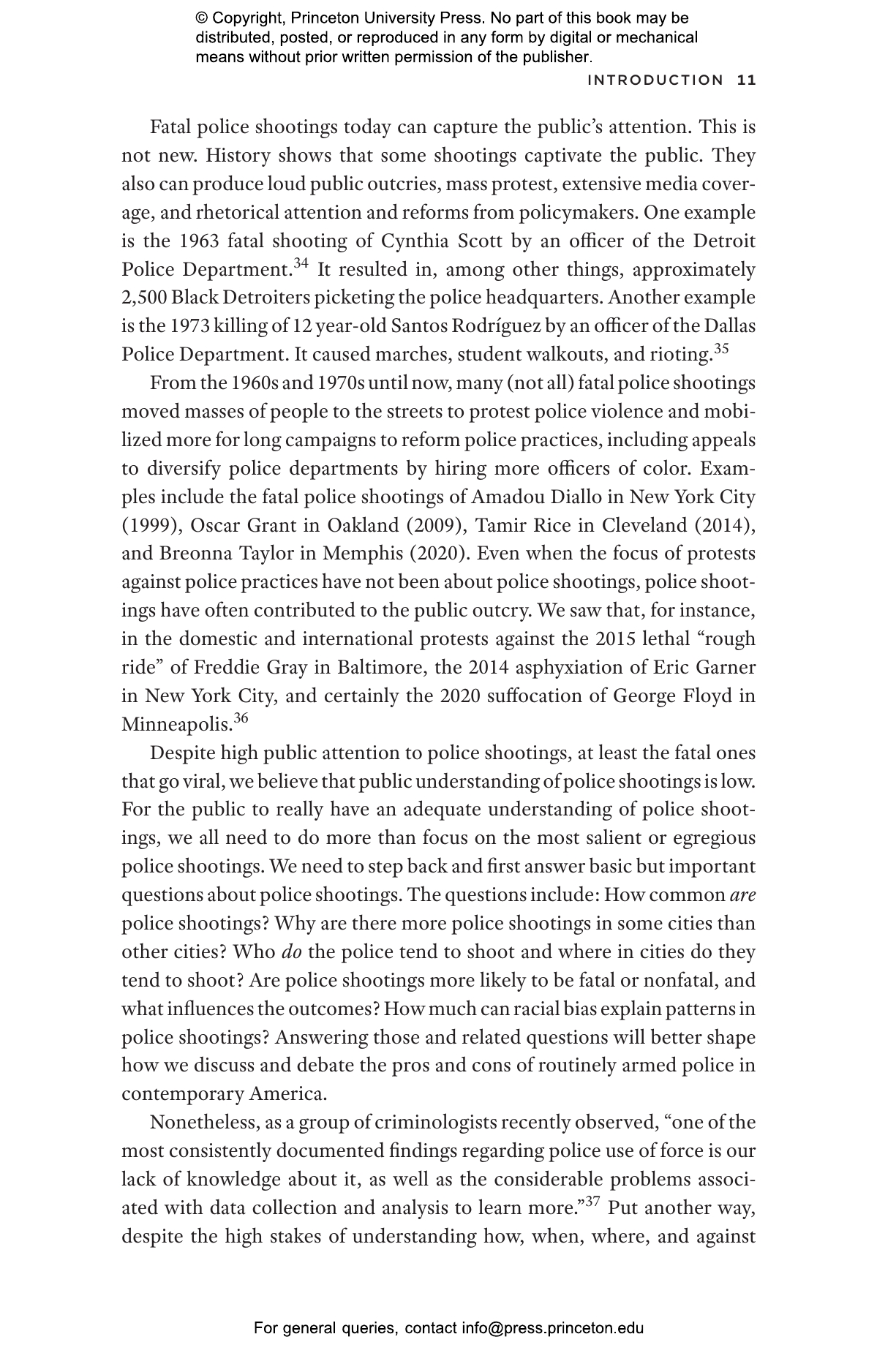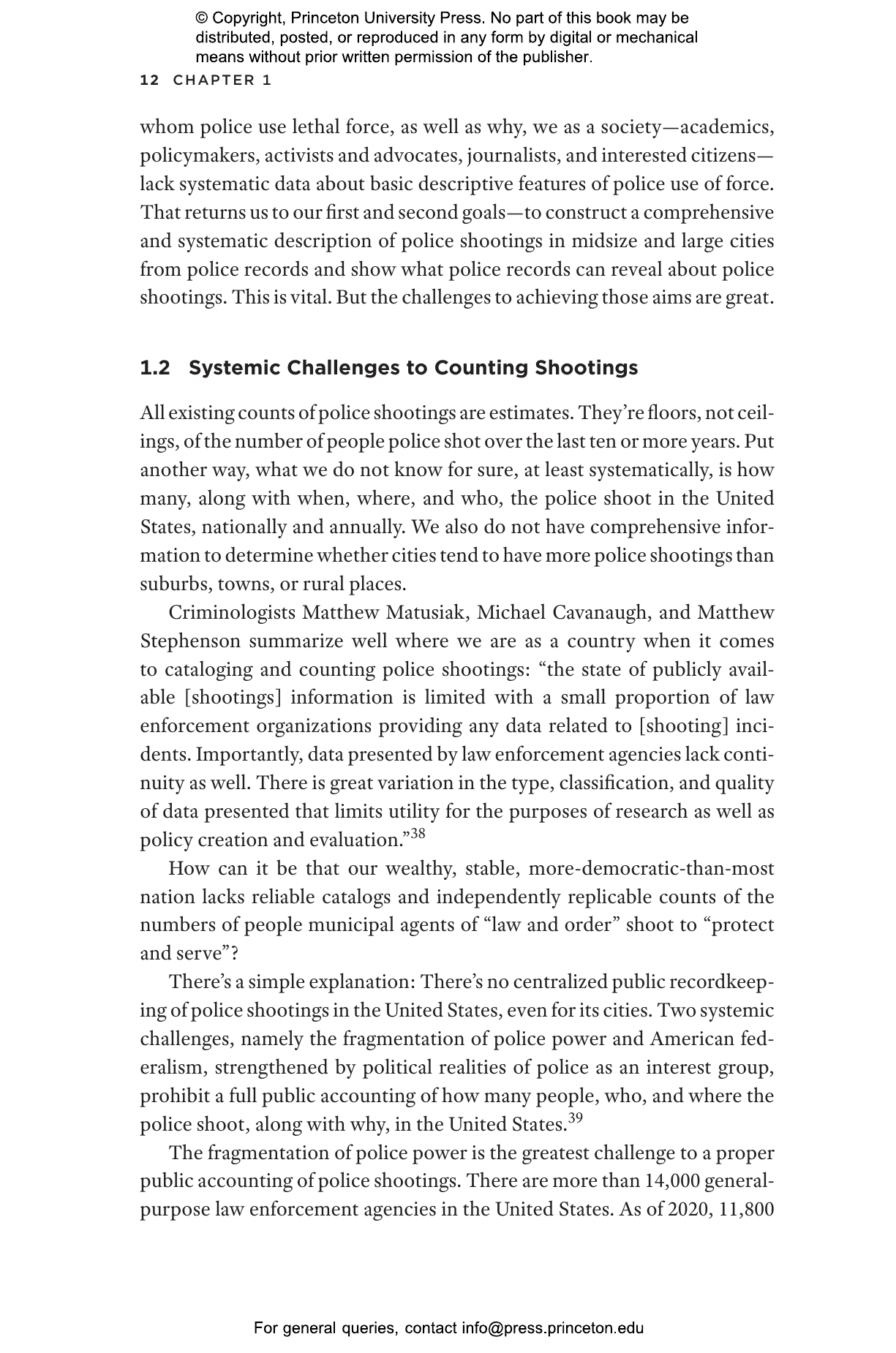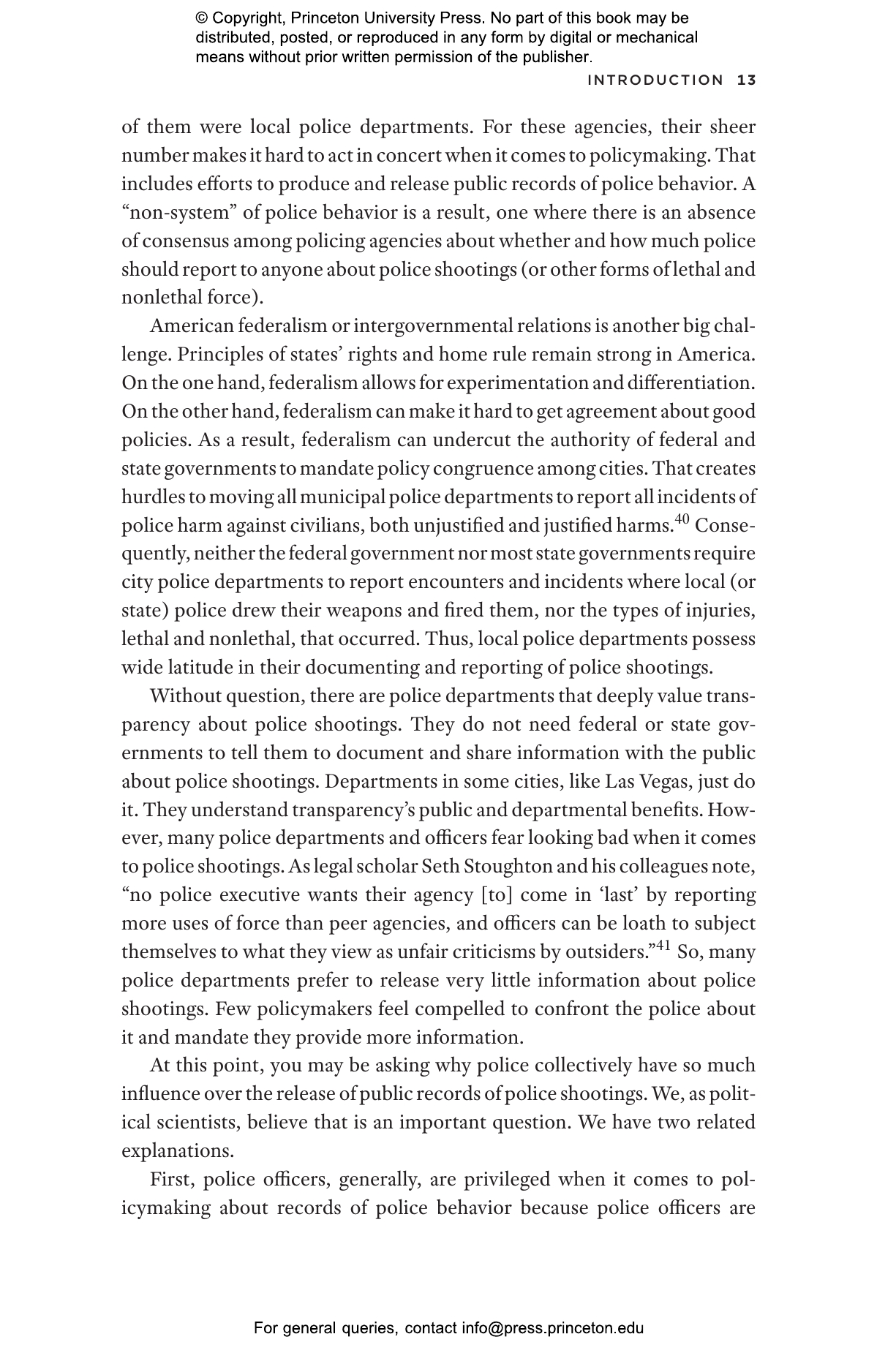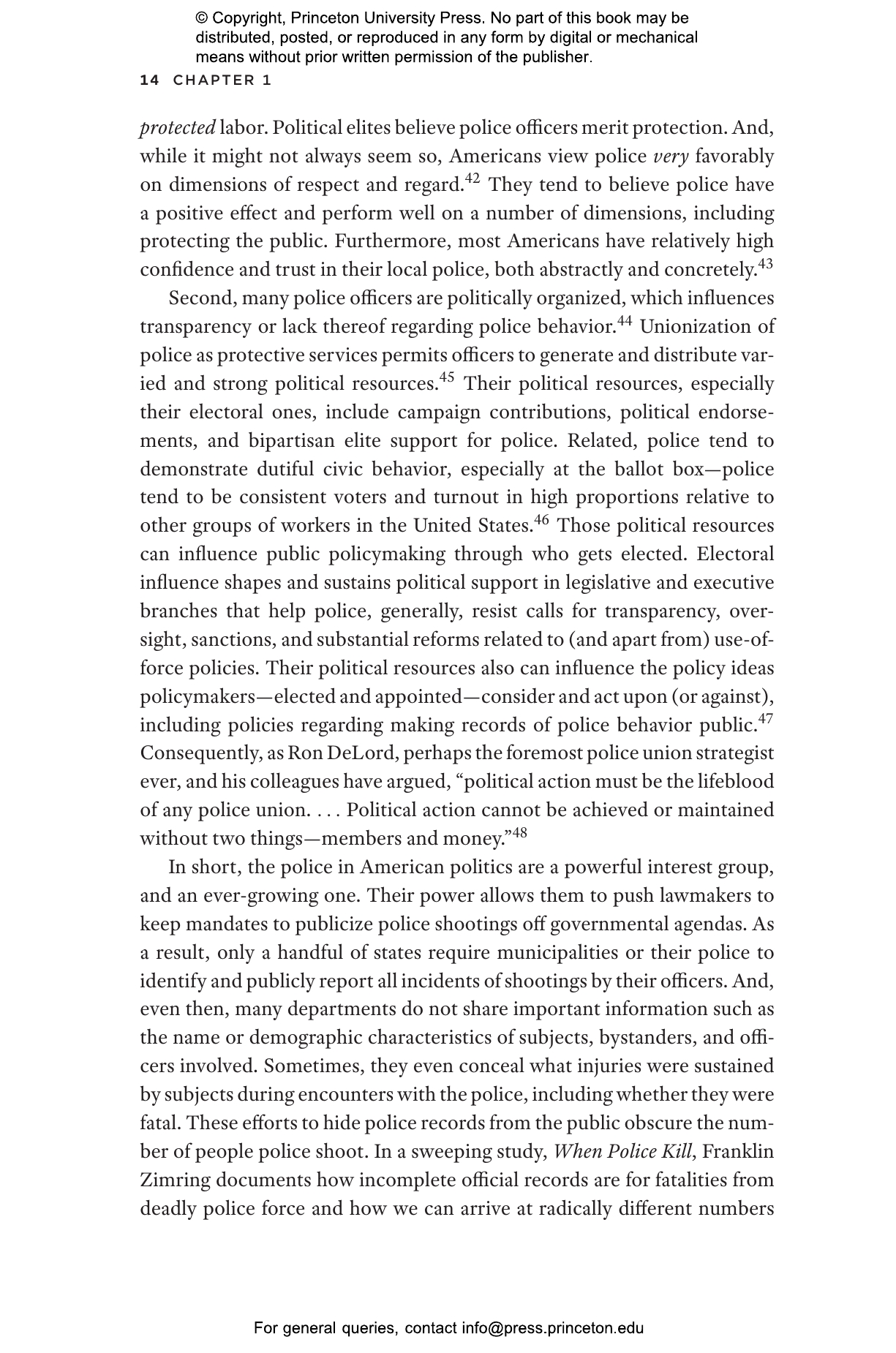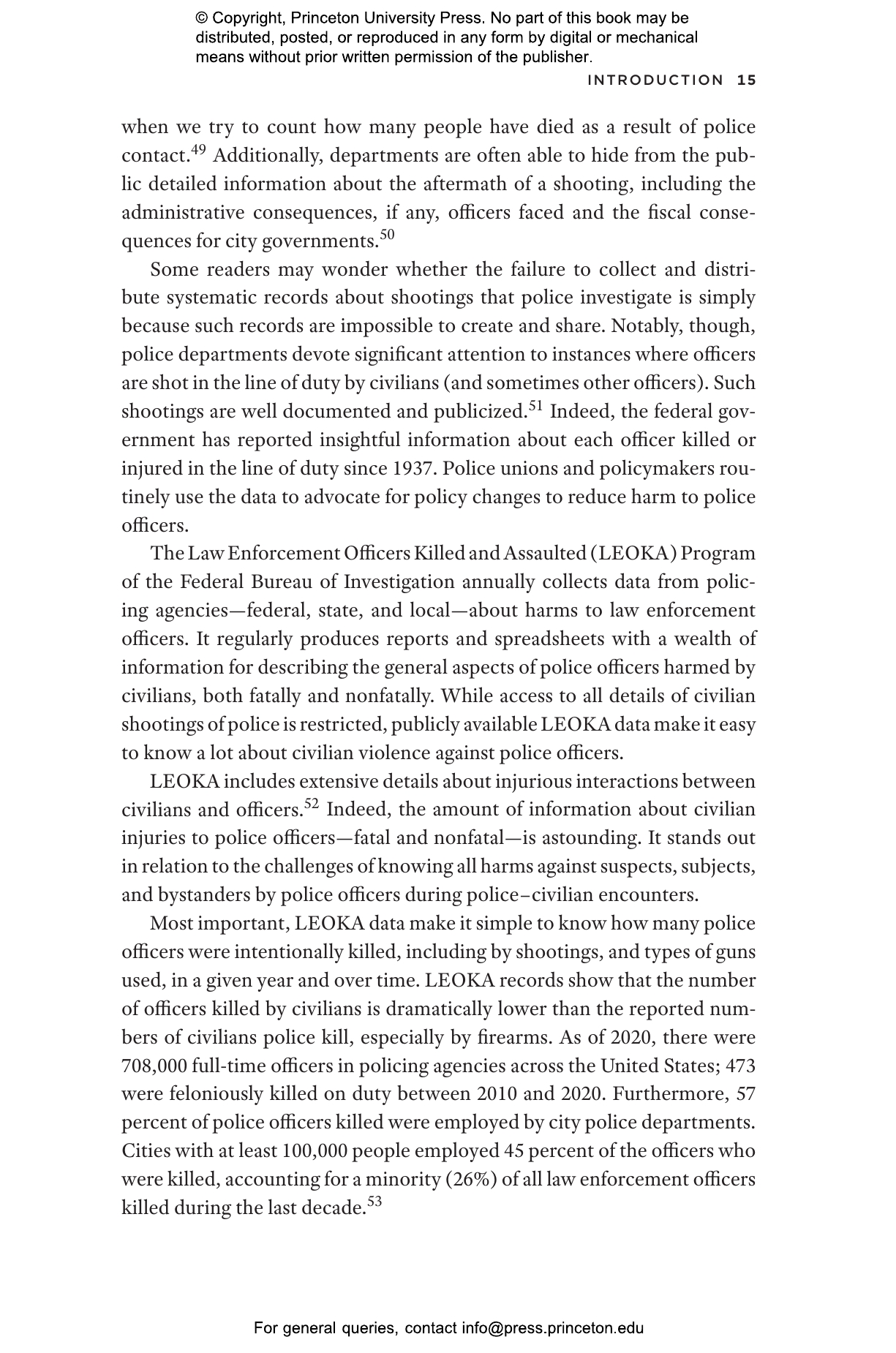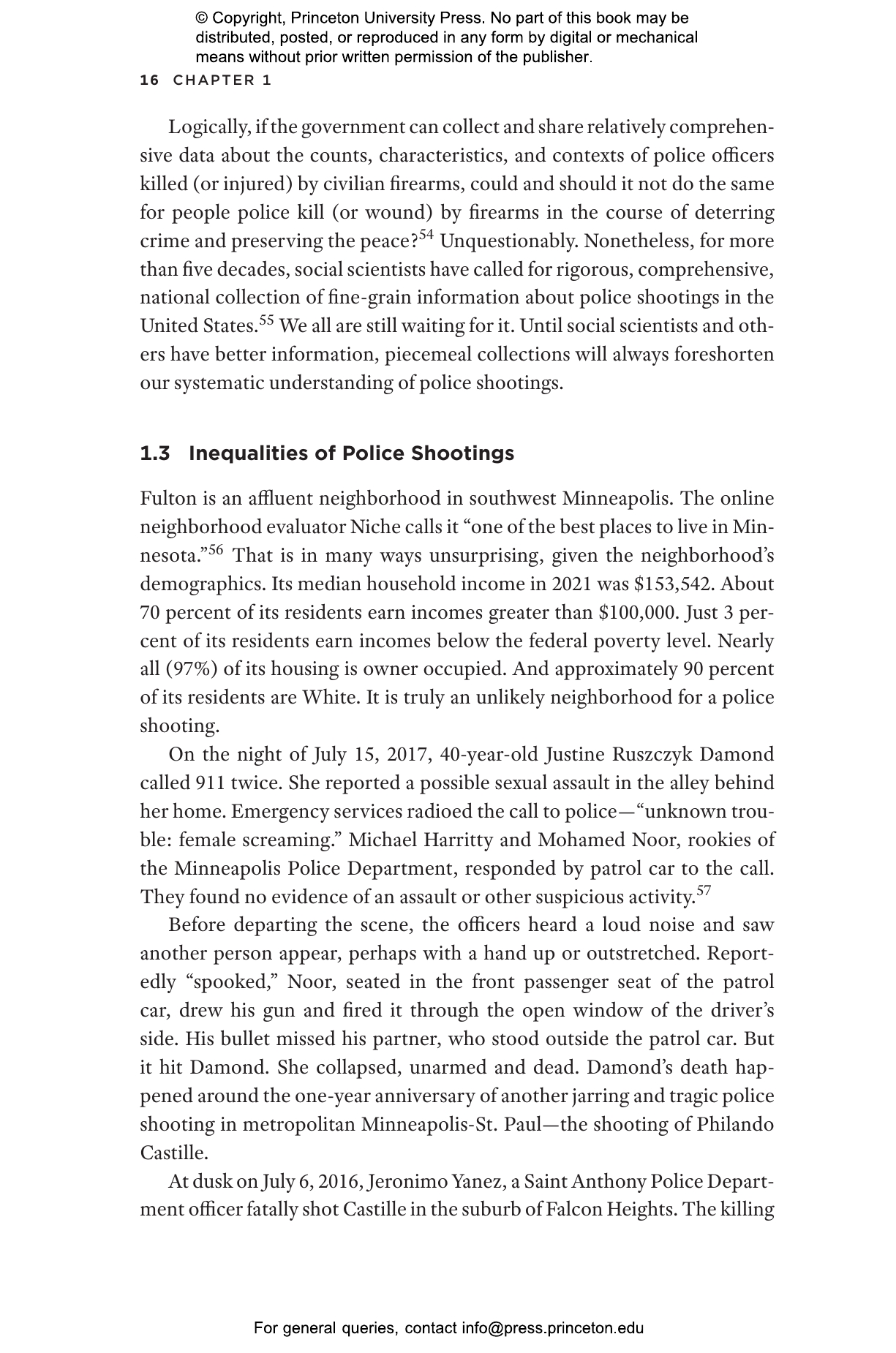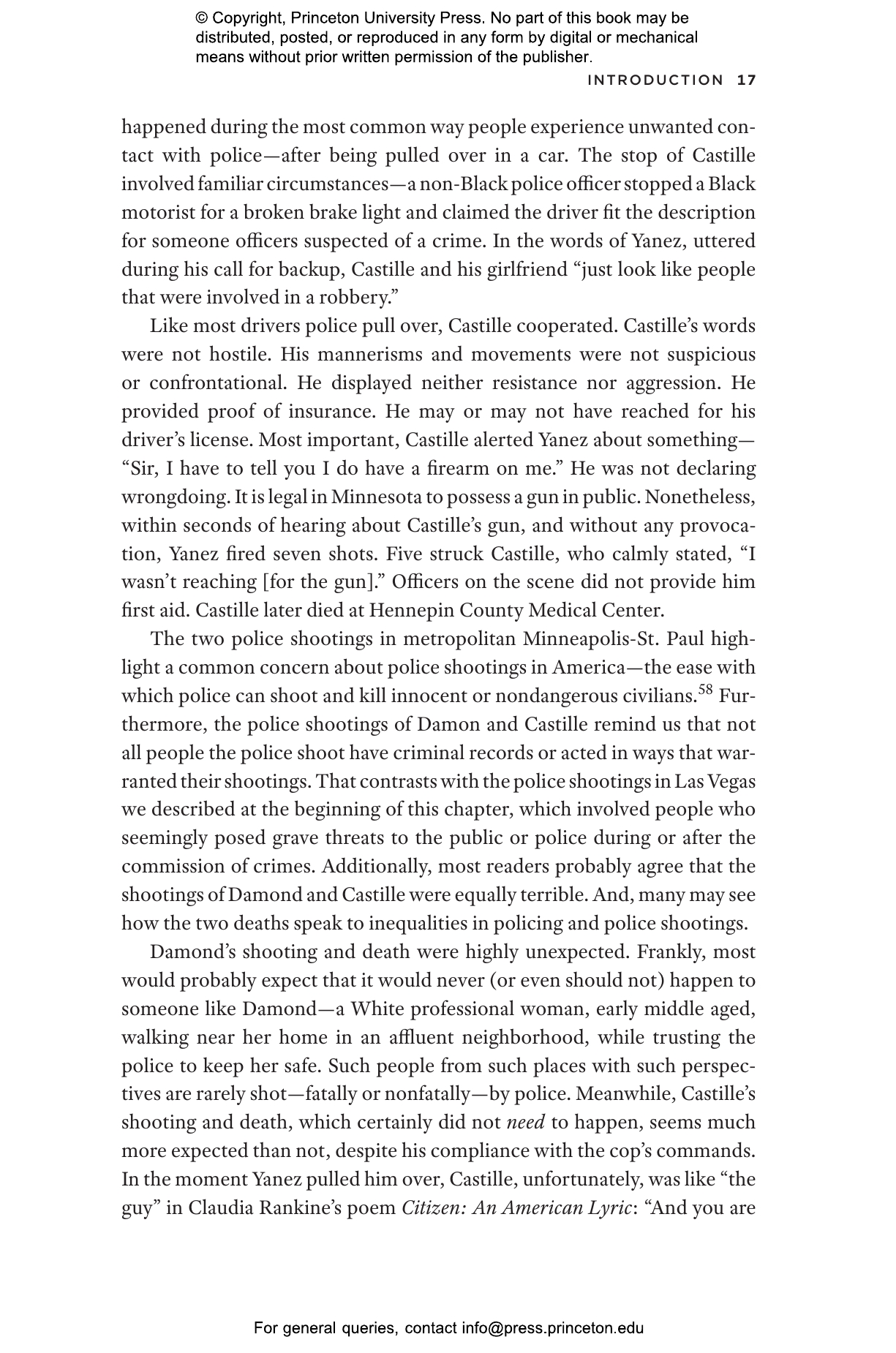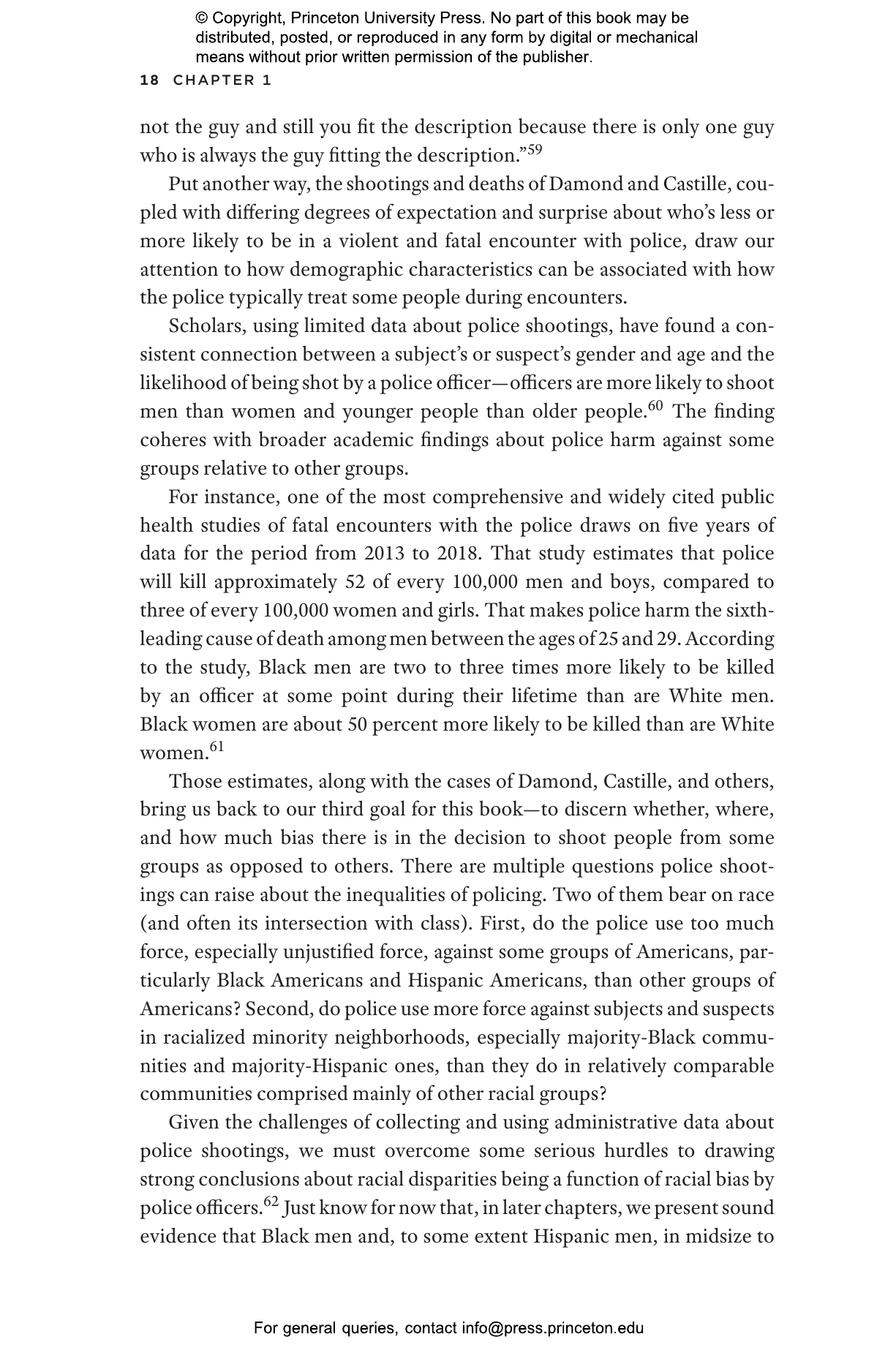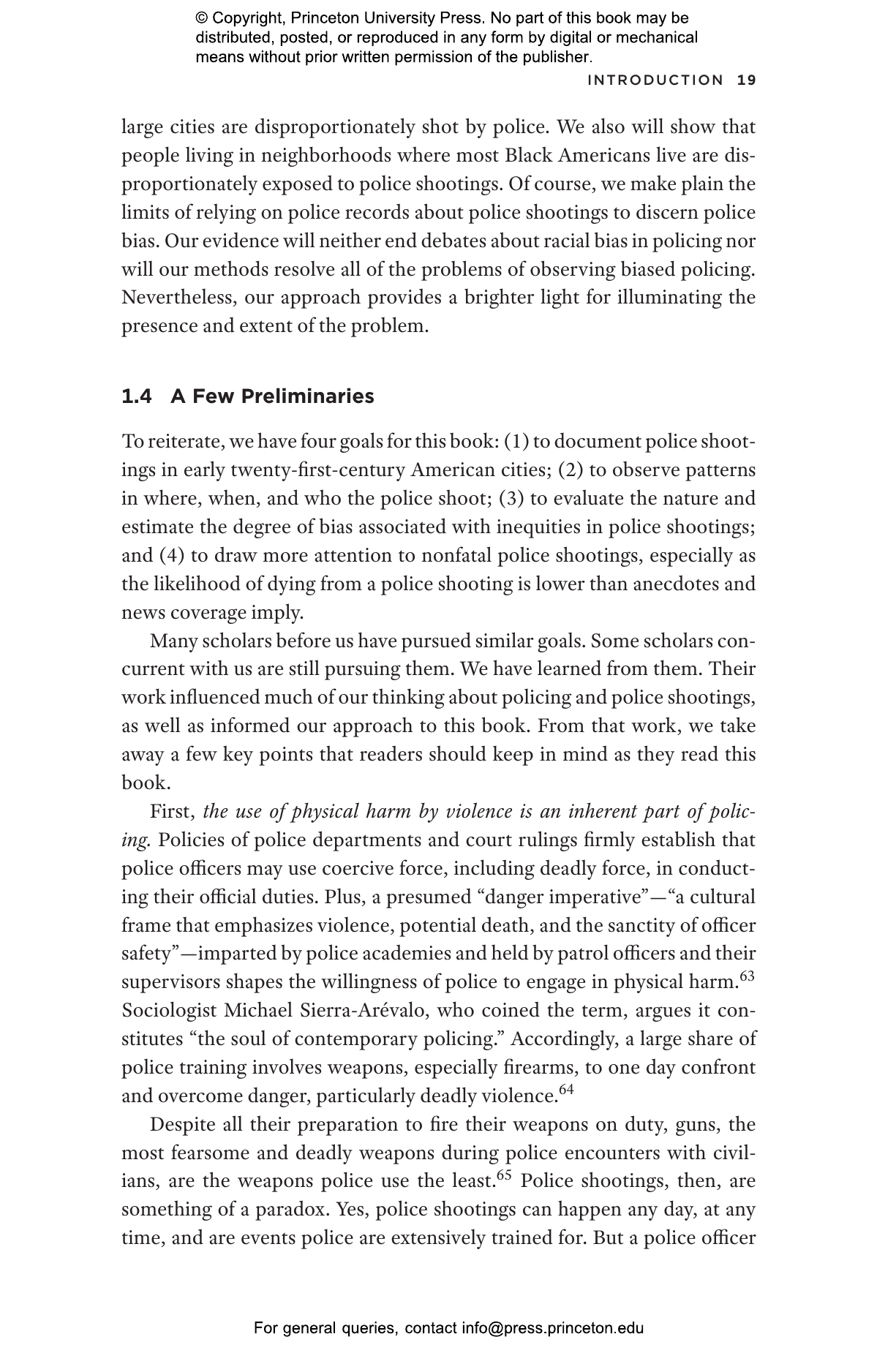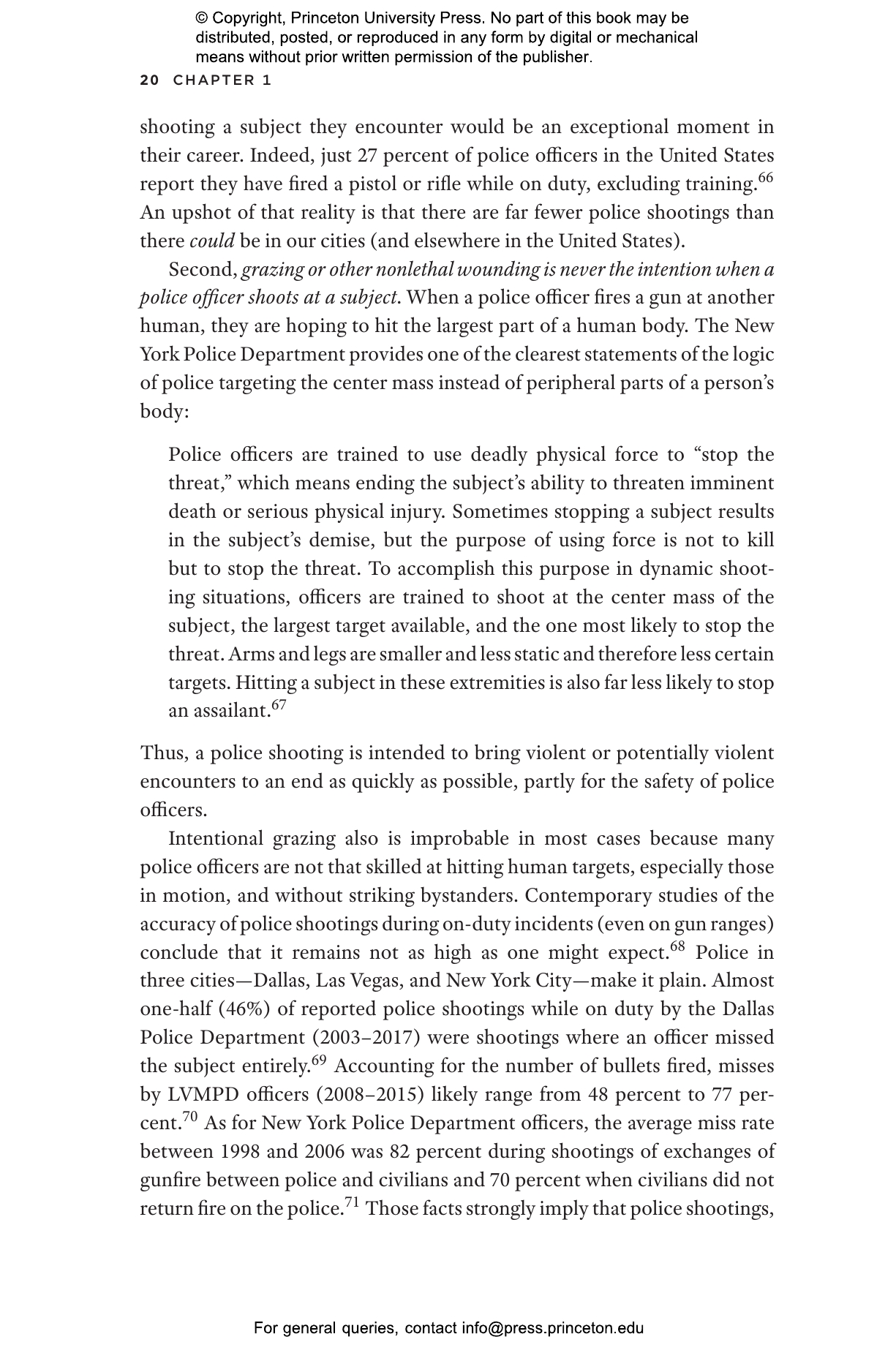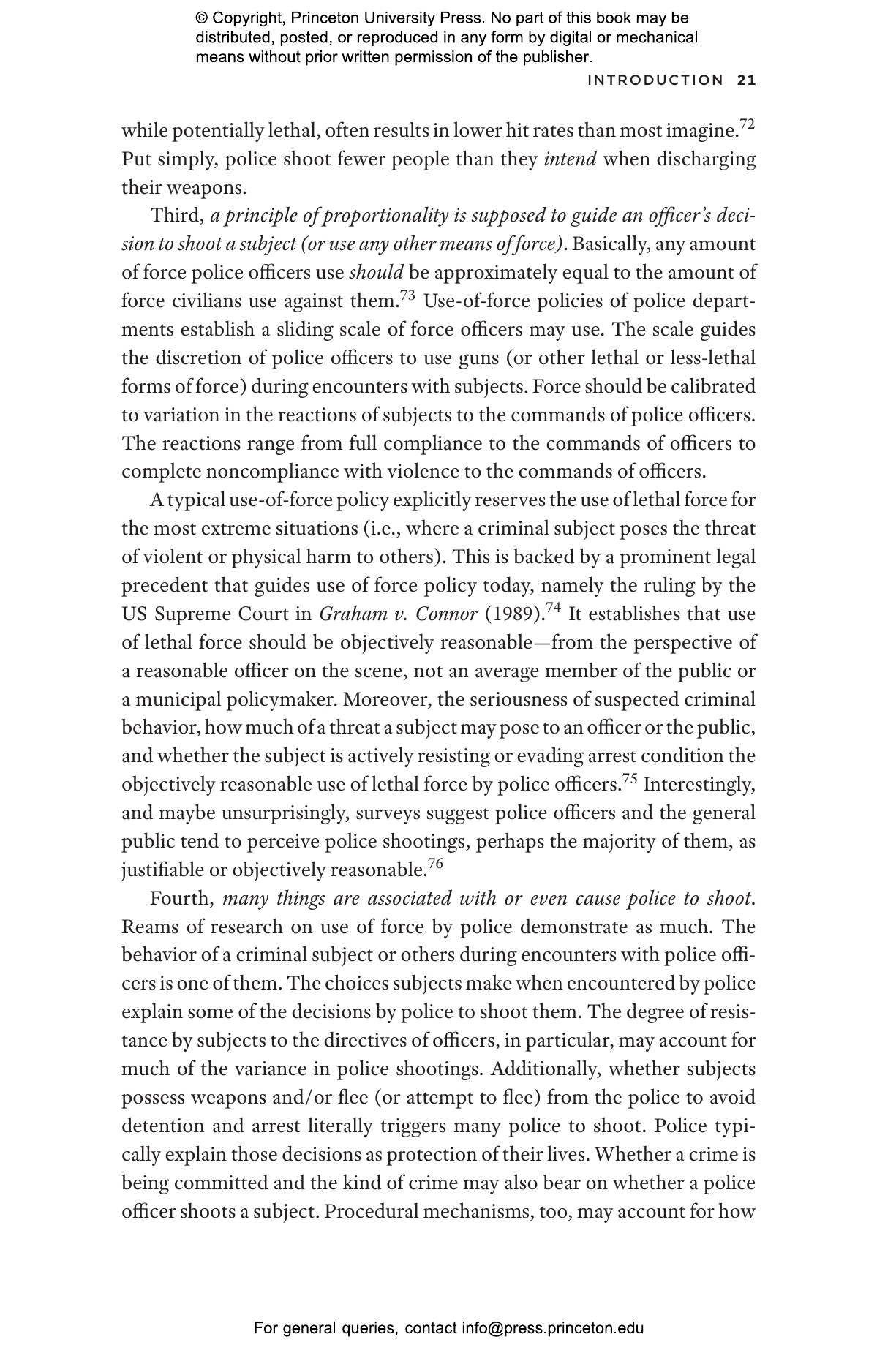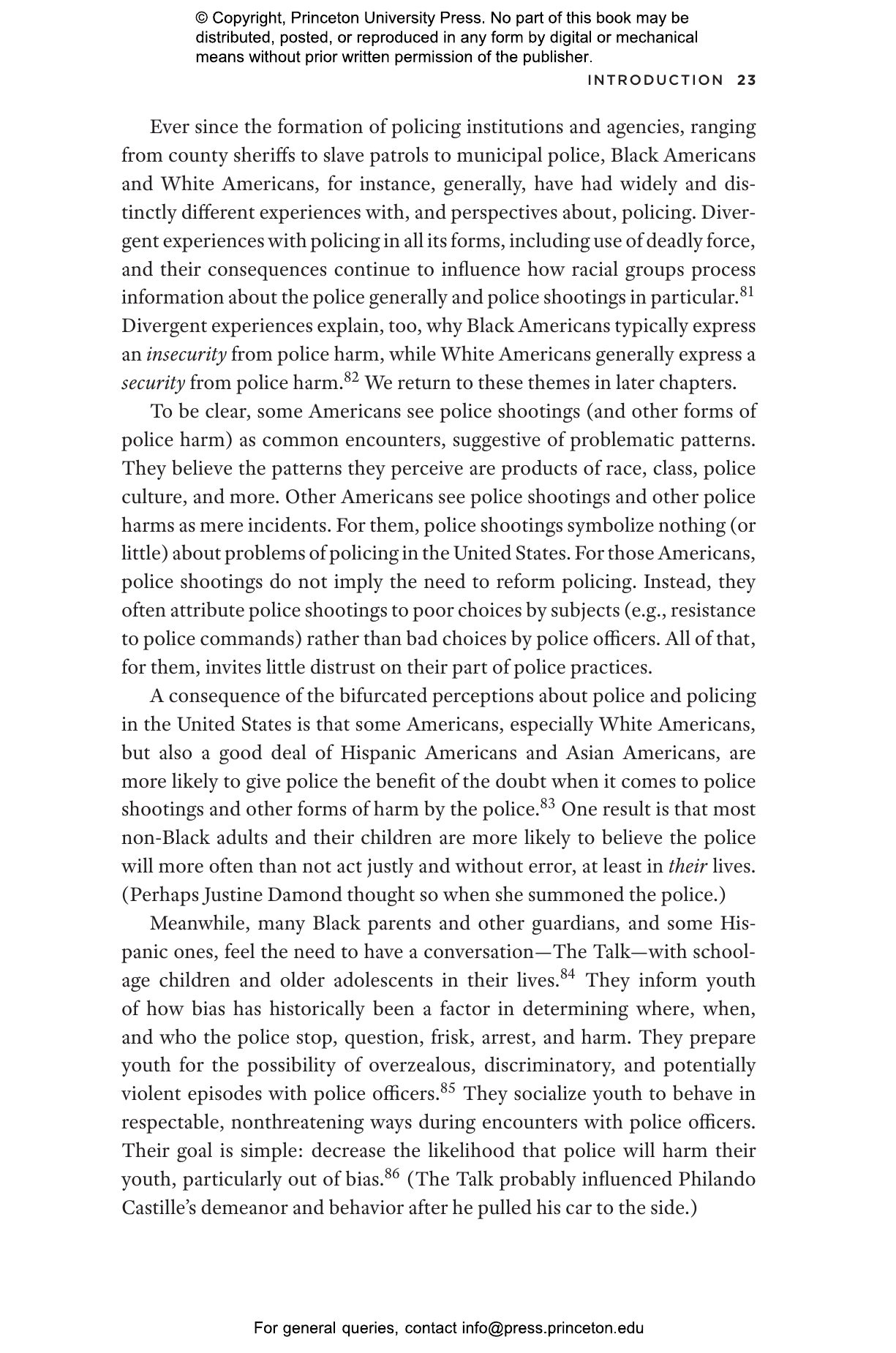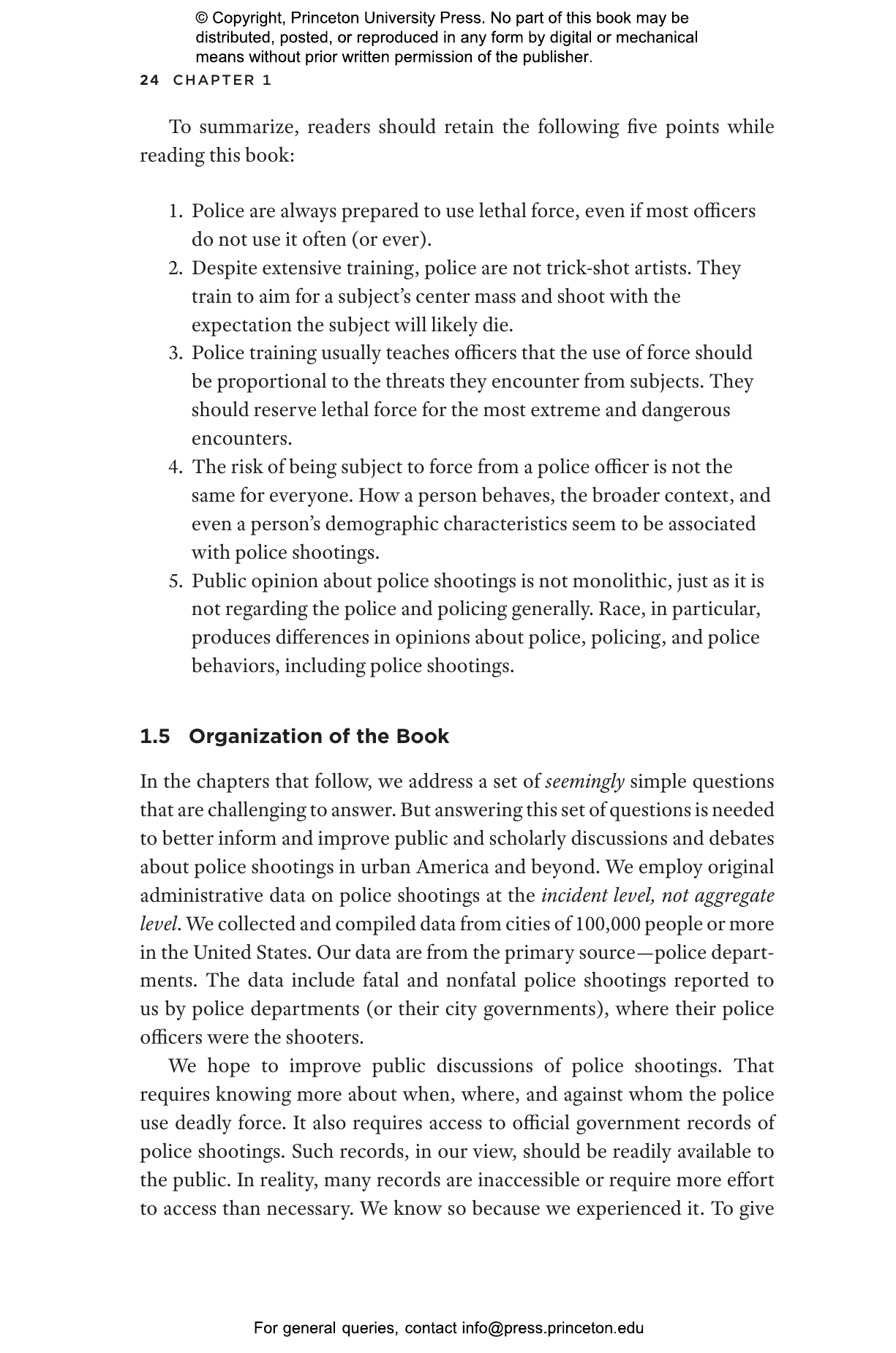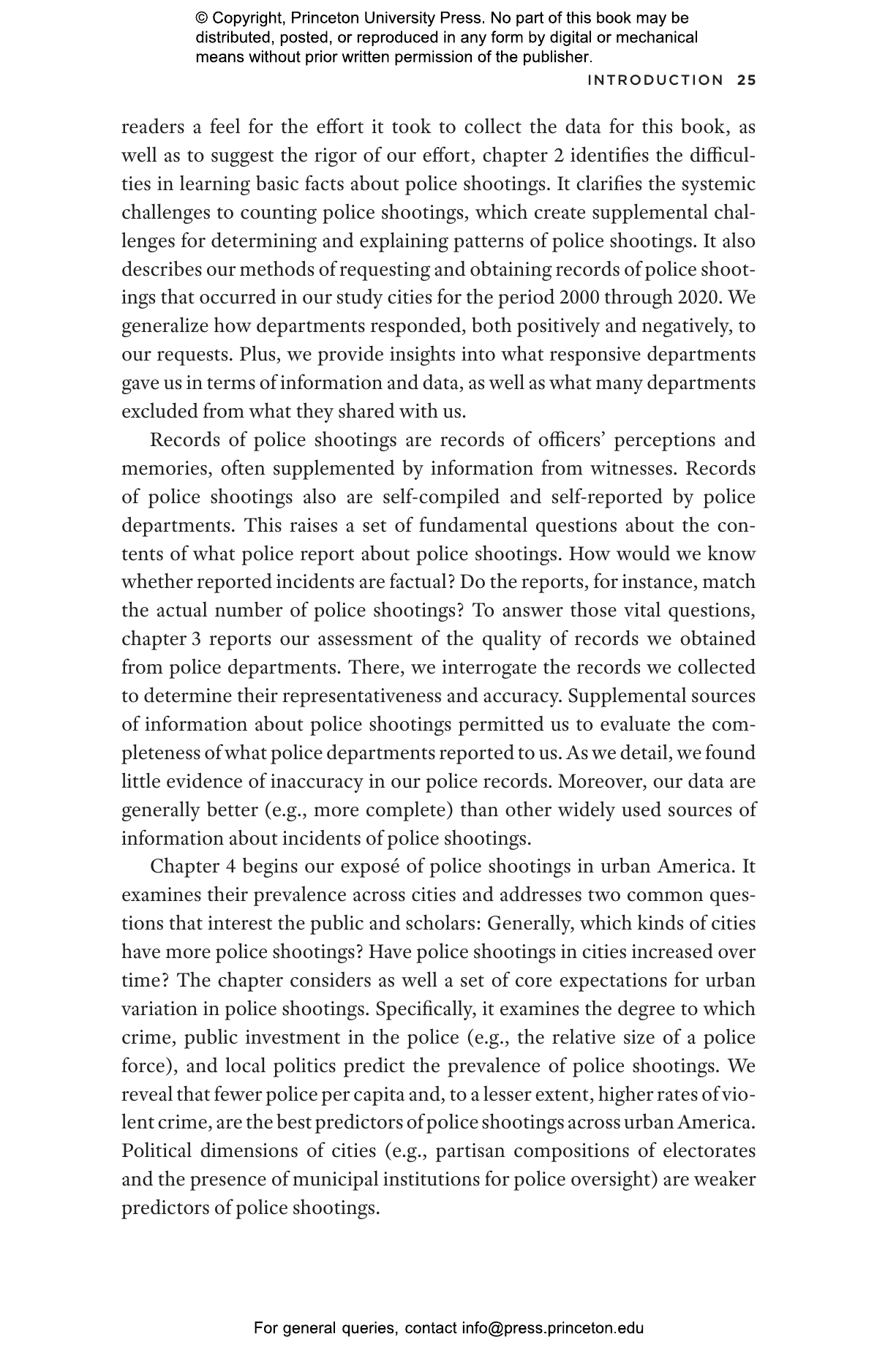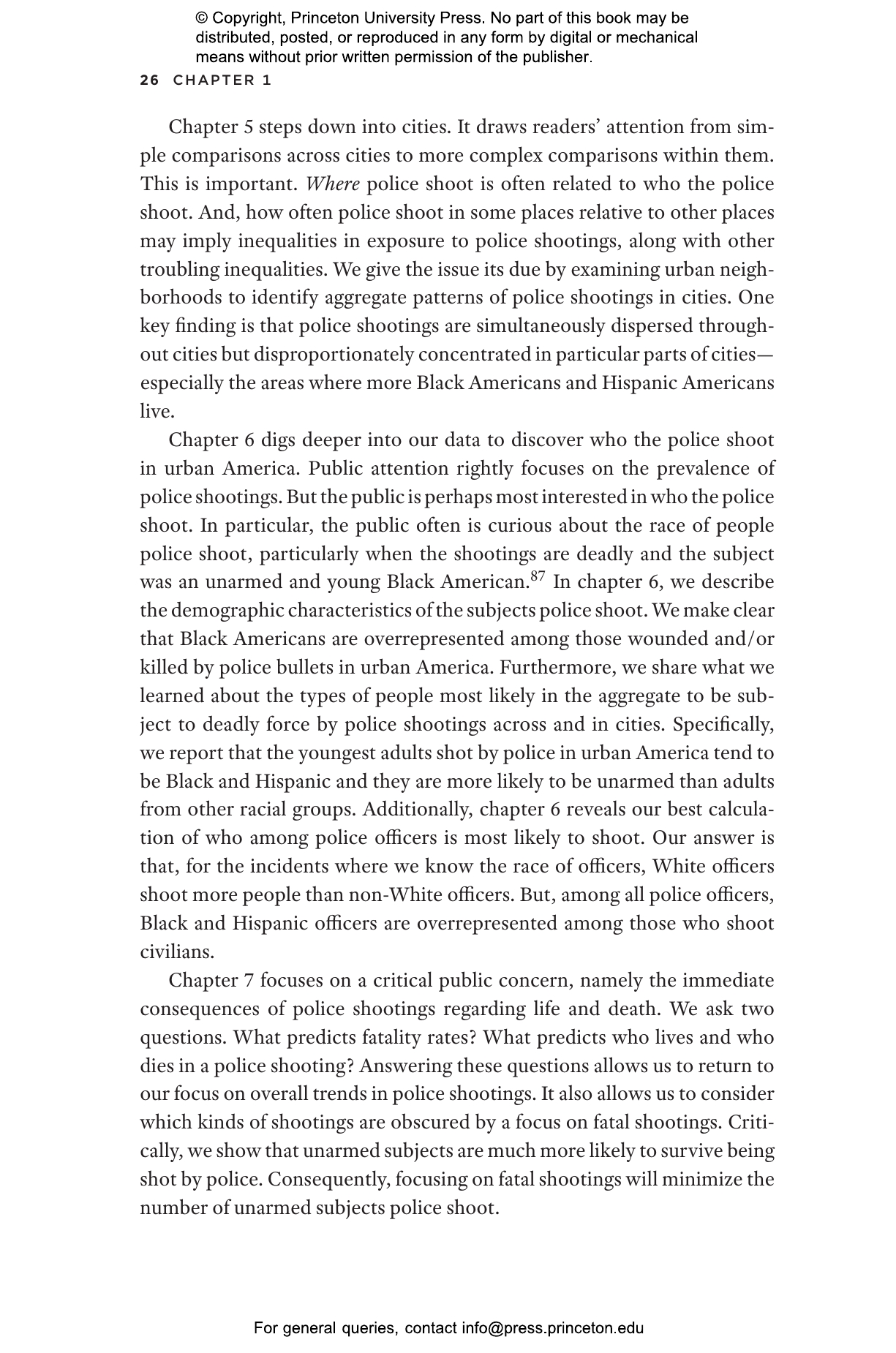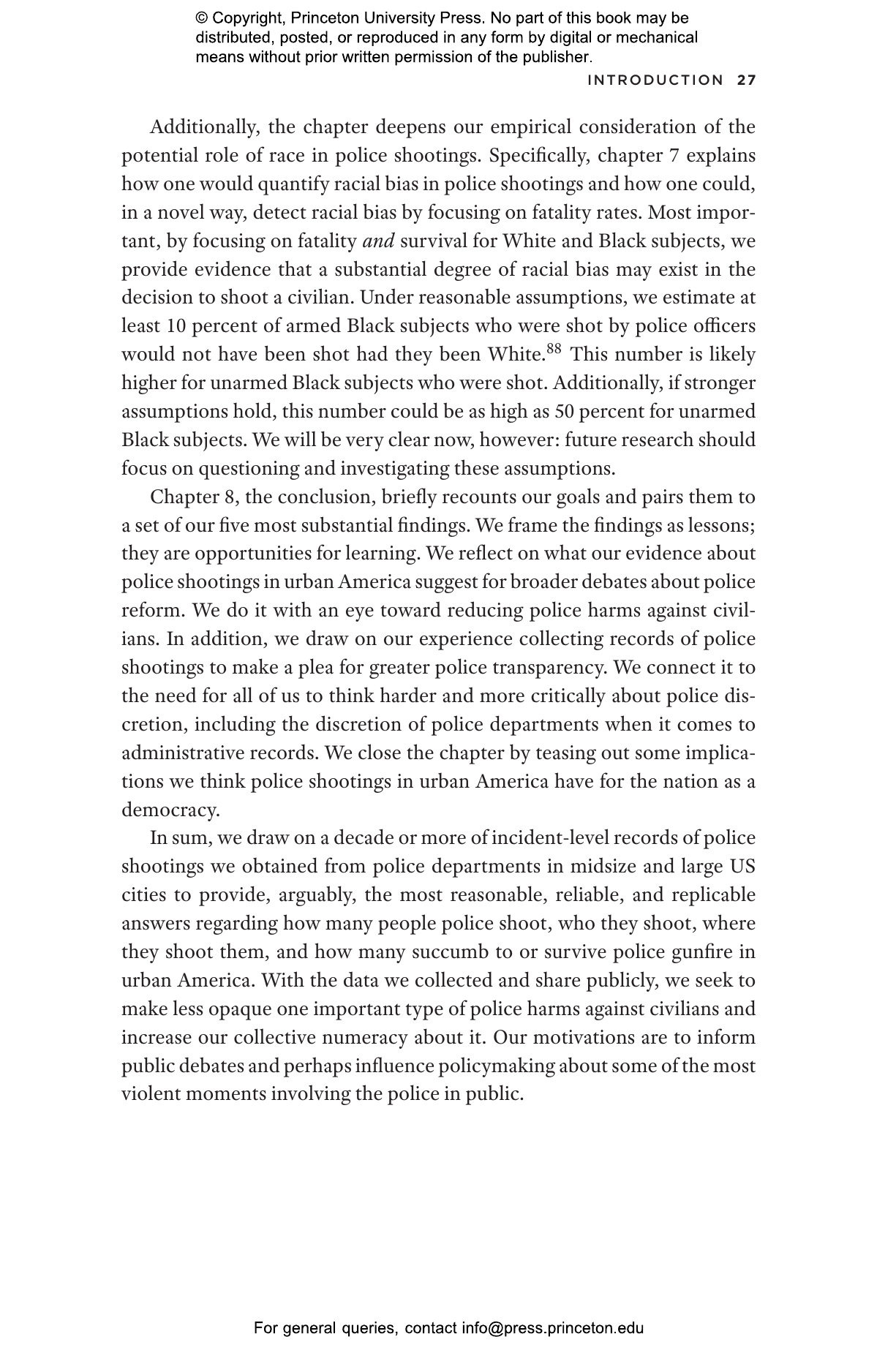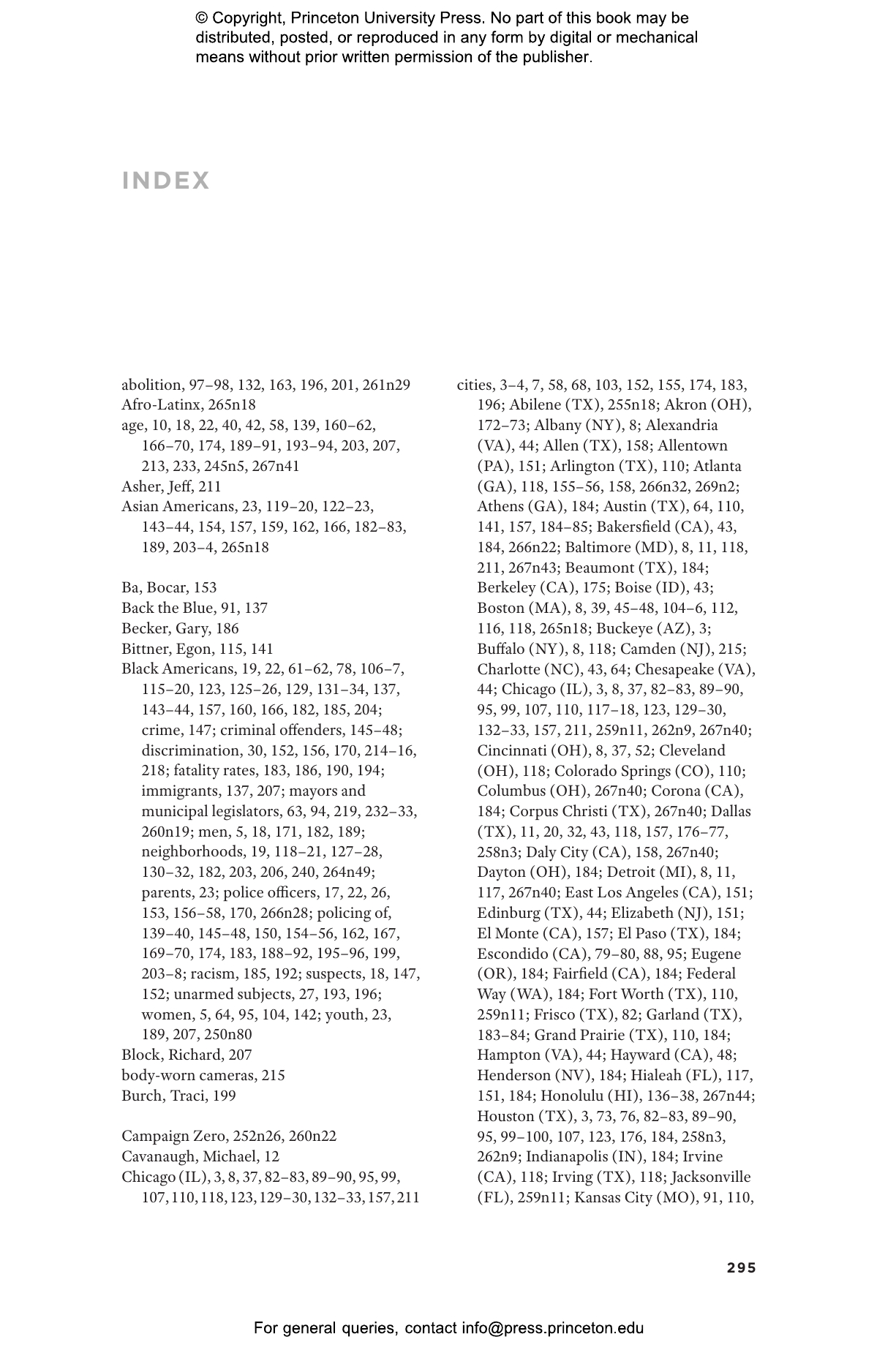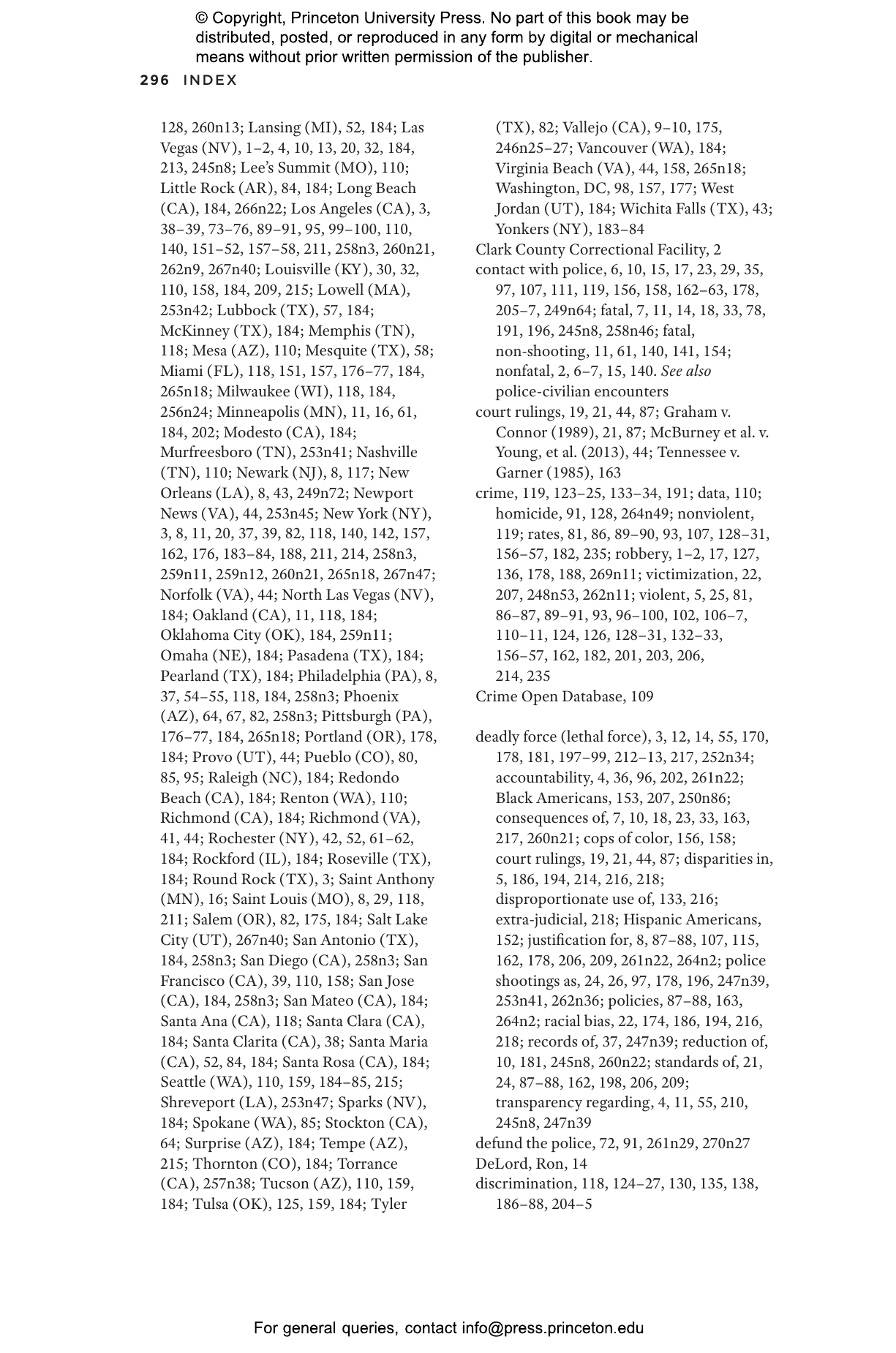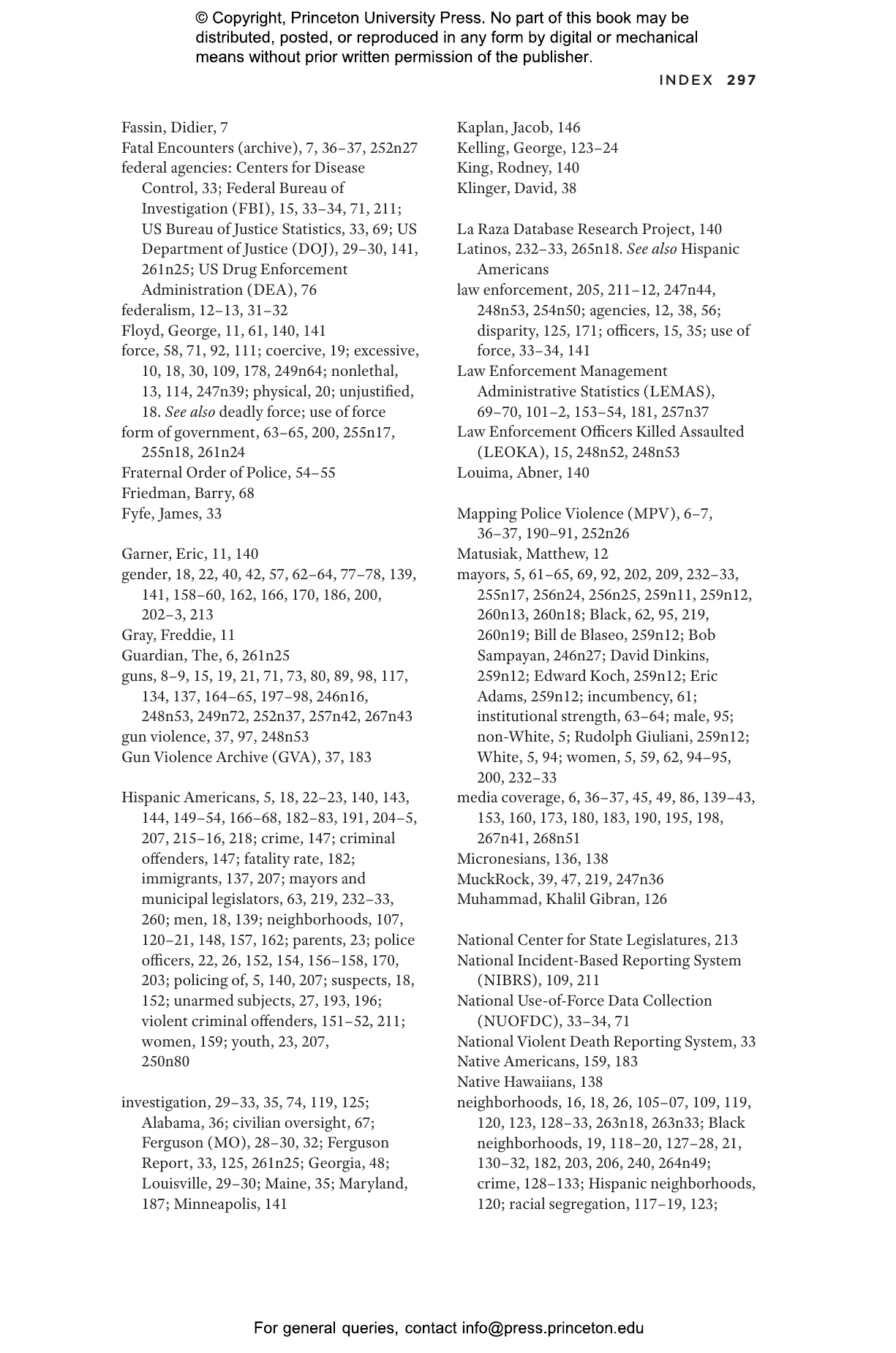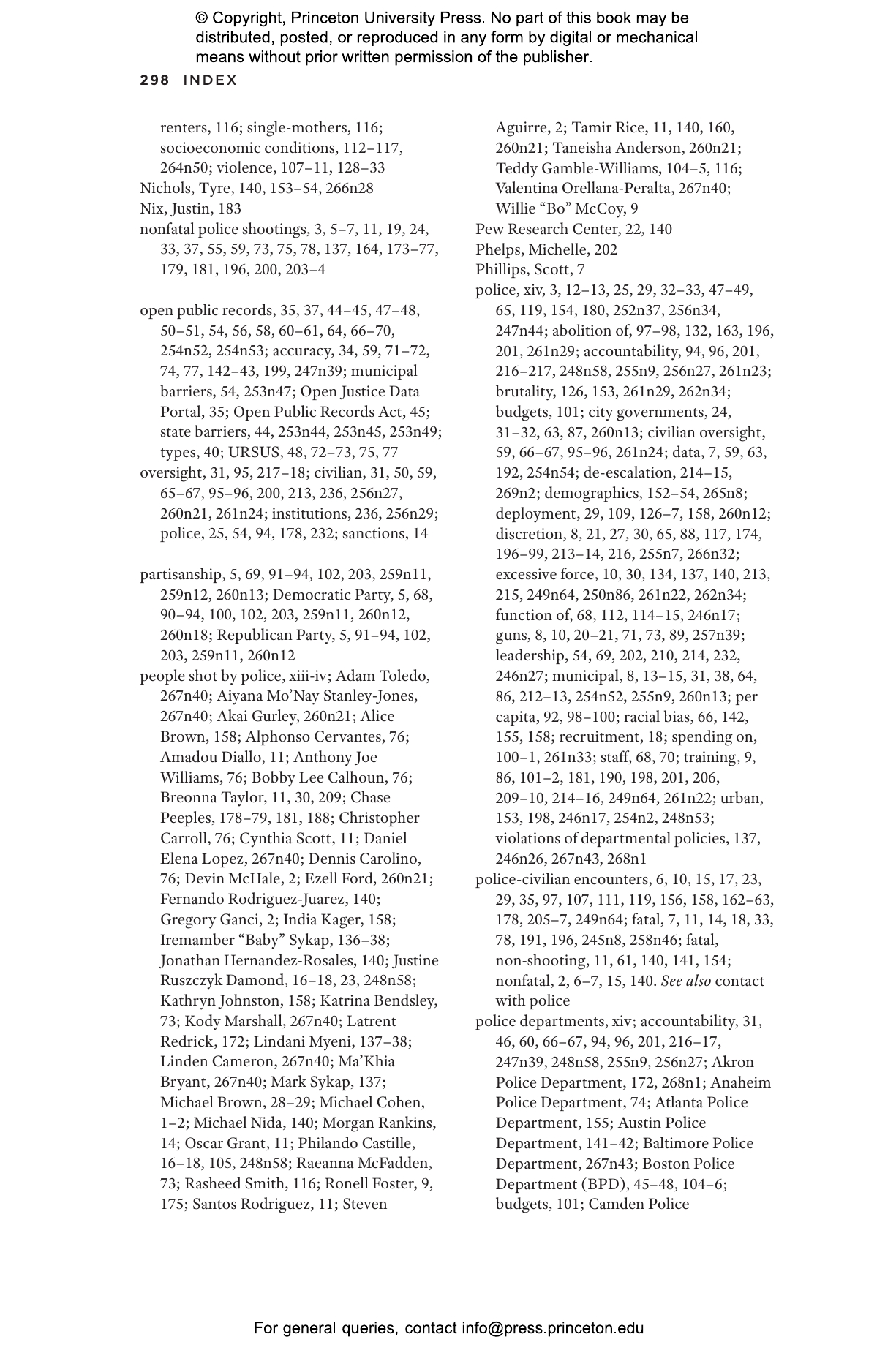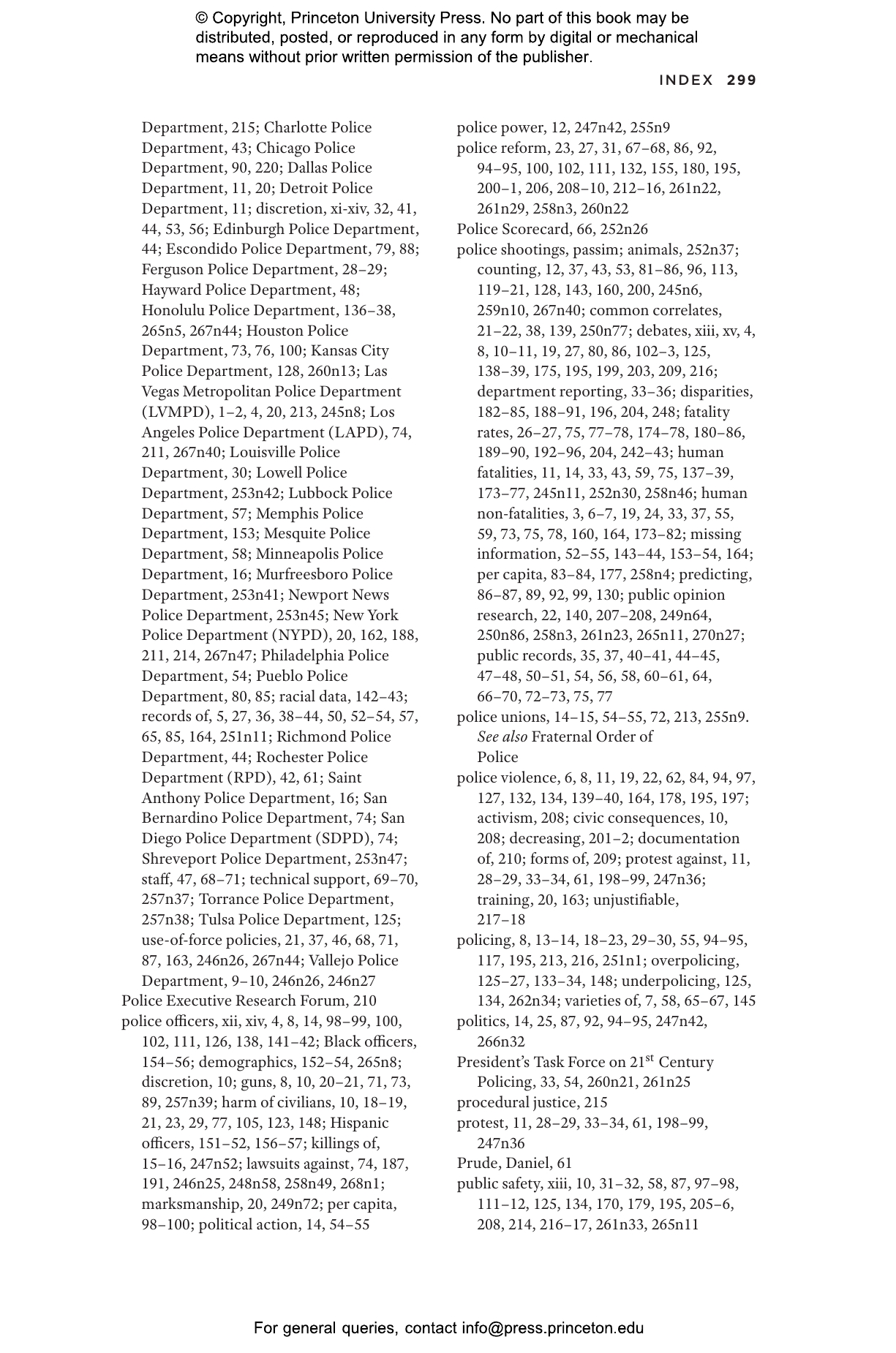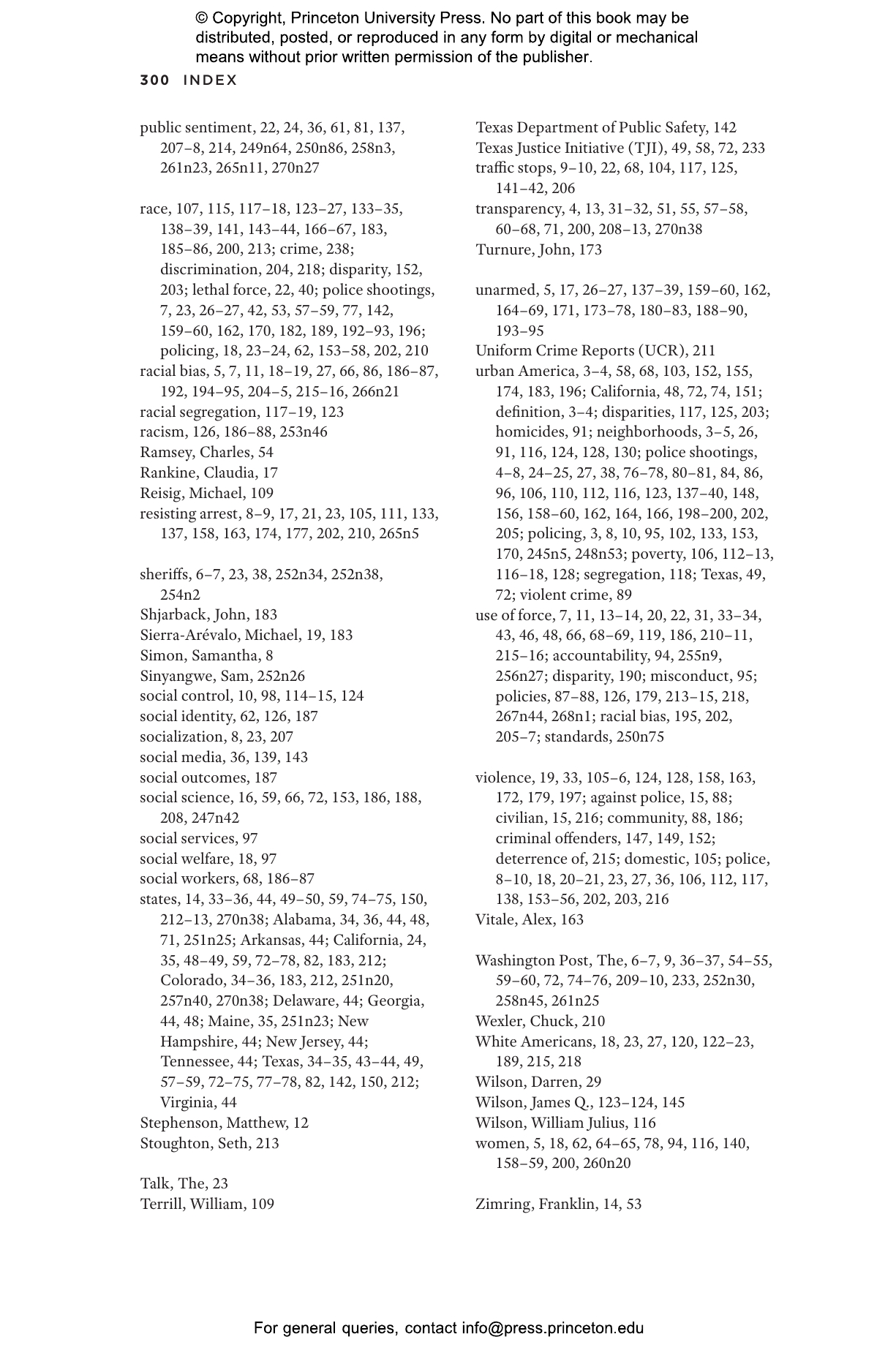Police shootings in America spark outrage and protest and raise questions about police use of lethal force. Yet despite the attention given to high-profile shootings, it is extremely difficult to draw wider conclusions about the frequency and outcomes of police gunfire because there is no systematic and centralized source of information on these incidents. This pioneering book draws on original data, compiled by the authors, to examine police shootings, both fatal and non-fatal, in hundreds of American cities. It documents racial disparities in shooting incidents and shows that the media spotlight on the most shocking fatal shootings tell only part of the story of police gunfire in our cities.
The authors find that there are patterns in when, where, and whom the police shoot, and they present strong evidence of unjustifiable disparities. It’s not just that young, unarmed Black men are disproportionately subjected to gunfire during encounters with police officers; there is also a disproportionate concentration of shootings in the places where most Black and Hispanic urbanites live, even accounting for violent crime rates and other factors. As a consequence, Black and Hispanic residents of large cities are disproportionately exposed to police gunfire, even when they are not themselves the targets of it. The authors offer other insights as well, exploring the connection between police department funding and rates of shootings, and considering the influence of a city’s political leadership on police use of gunfire. It is only through a deeper understanding of police shootings, the authors argue, that we can reduce their incidence and make effective reform possible.
Tom S. Clark is professor of political science at Stanford University. He is the author of The Limits of Judicial Independence and The Supreme Court: An Analytic History of Constitutional Decision-Making. Adam N. Glynn is professor of political science and quantitative theory and methods at Emory University. He is a coauthor of Varieties of Democracy: Measuring Two Centuries of Political Change. Michael Leo Owens is professor of political science at Emory University. He is the author of God and Government in the Ghetto: The Politics of Church-State Collaboration in Black America.
"A highly accessible analysis. . . . [T]heir findings illustrate both a complex picture of police shootings and demonstrable patterns to these events, hopefully laying the groundwork for effective conversations about reforms."—Library Journal
“This book presents the largest, most comprehensive, and best study to date of police shootings in urban America. Anyone concerned with racial equity, police training, the sociology or politics of policing, government transparency, or the health of American democracy should read this book.”—Frank R. Baumgartner, coauthor of Suspect Citizens: What 20 Million Traffic Stops Tell Us about Policing and Race
“Police shootings get media attention, but less careful academic study. This remarkable, extremely readable book is an exception: it’s an important read for policing scholars, policymakers, and the general public. The product of extremely hard work and rigorous social science, it is full of findings both fascinating and troubling.”—Barry Friedman, New York University
“Deadly Force provides a rare look into the dynamics of police shootings across US cities. Through a volley of public information requests about both fatal and nonfatal shootings, the authors build a novel database that reveals when and where the police shoot and how to measure the racial bias in these shootings. In the process, the book illustrates the woefully inadequate public documentation around fatal force, concluding with a plea for more government transparency.”—Michelle Phelps, author of The Minneapolis Reckoning: Race, Violence, and the Politics of Policing in America
“In this incredibly readable and meticulously analyzed account Clark, Glynn, and Owens detail the frequency and pattern of police shootings in America. With findings that both confirm and complicate prior understandings, the dataset they have arduously collected will serve as the new definitive source on this deeply important topic.”—Jessica Trounstine, Vanderbilt University
This publication has been produced to meet accepted Accessibility standards and contains various accessibility features including concise image descriptions, a table of contents, a page list to navigate to pages corresponding to the print source version, and elements such as headings for structured navigation. Appearance of the text and page layout can be modified according to the capabilities of the reading system.
Accessibility Features
-
WCAG v2.2
-
WCAG level AA
-
Table of contents navigation
-
Single logical reading order
-
Short alternative textual descriptions
-
Print-equivalent page numbering
-
Landmark navigation
-
Index navigation
-
Epub Accessibility Specification 1.1
-
ARIA roles provided
-
All non-decorative content supports reading without sight
-
No known hazards or warnings





